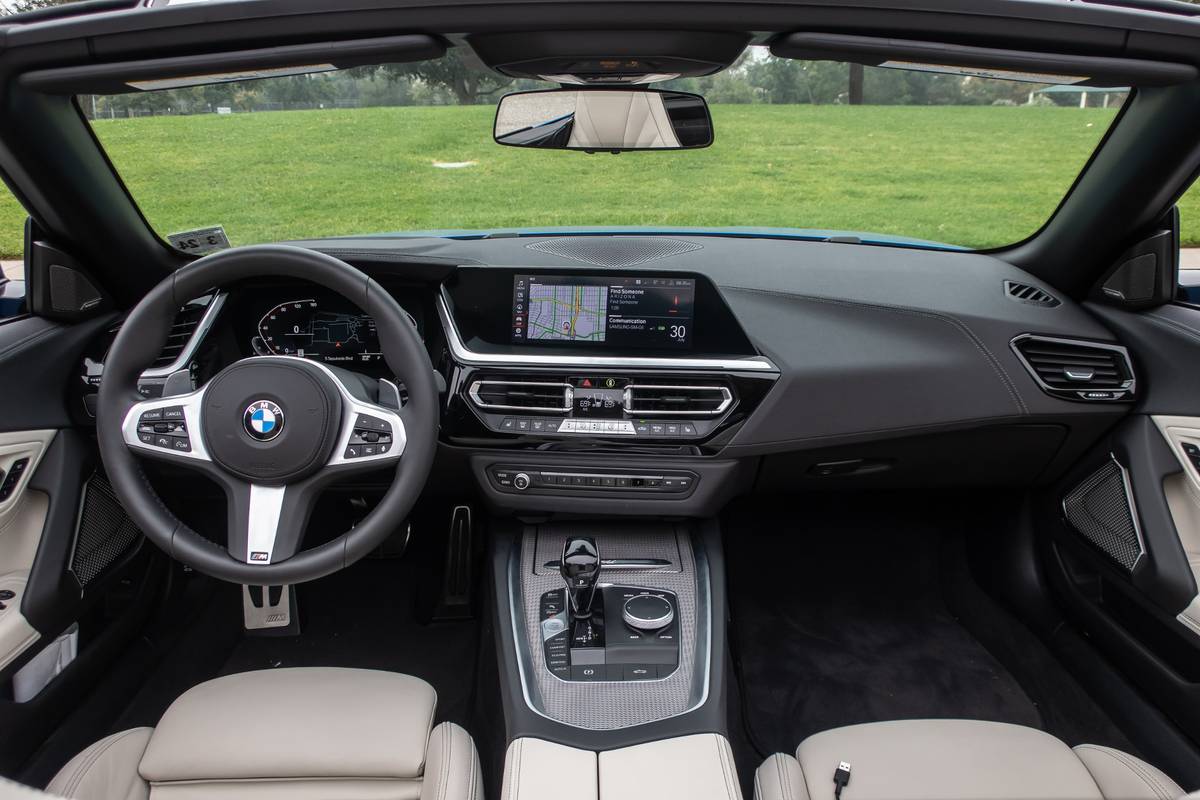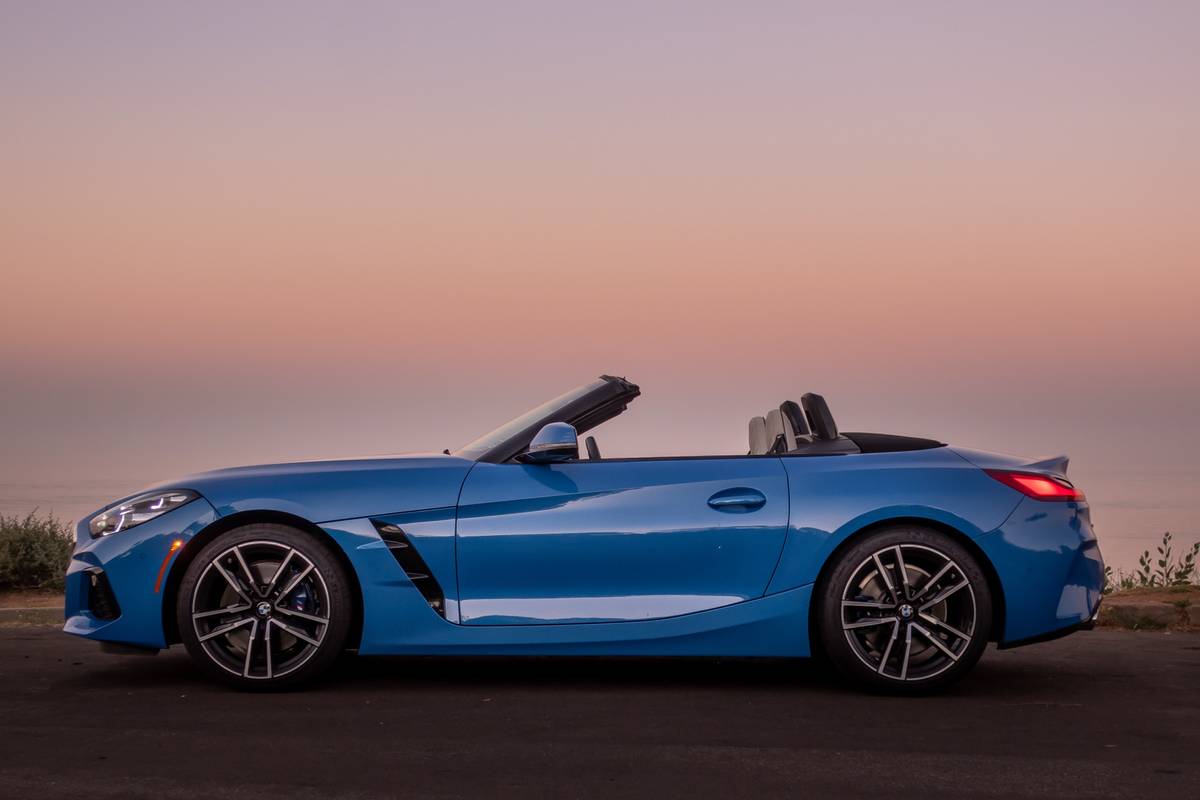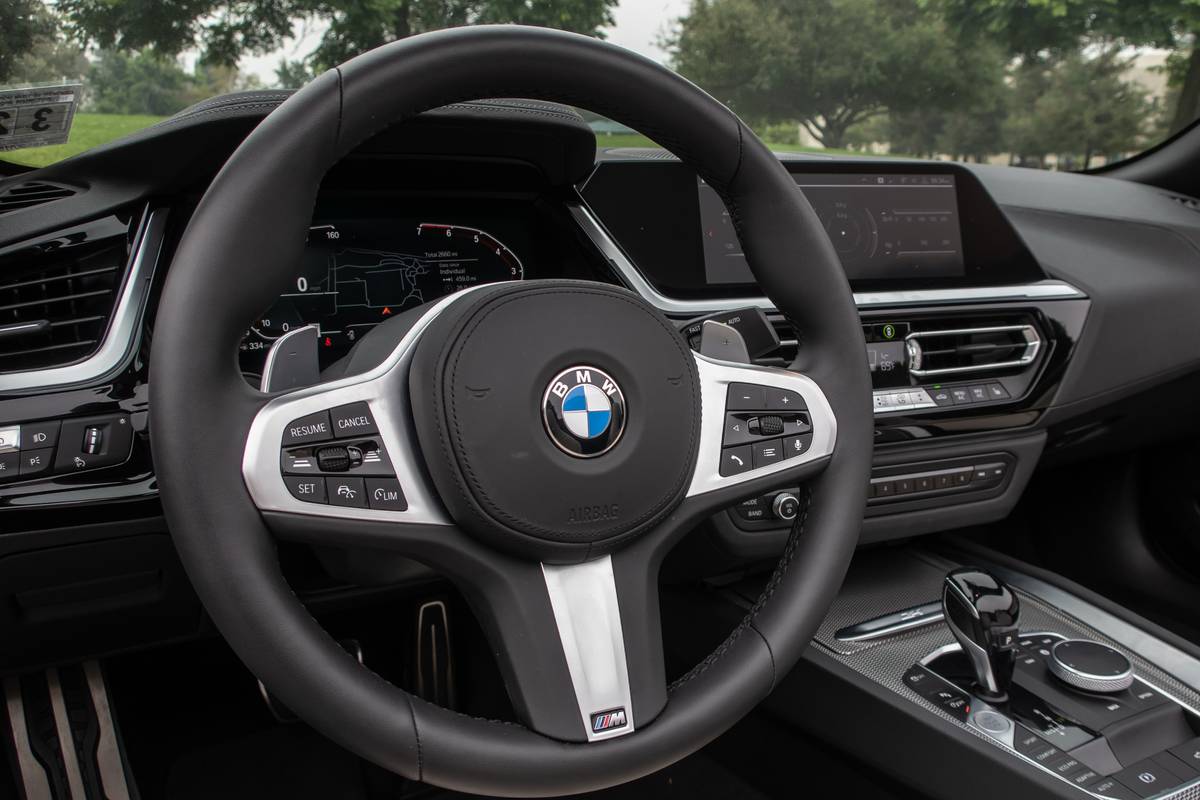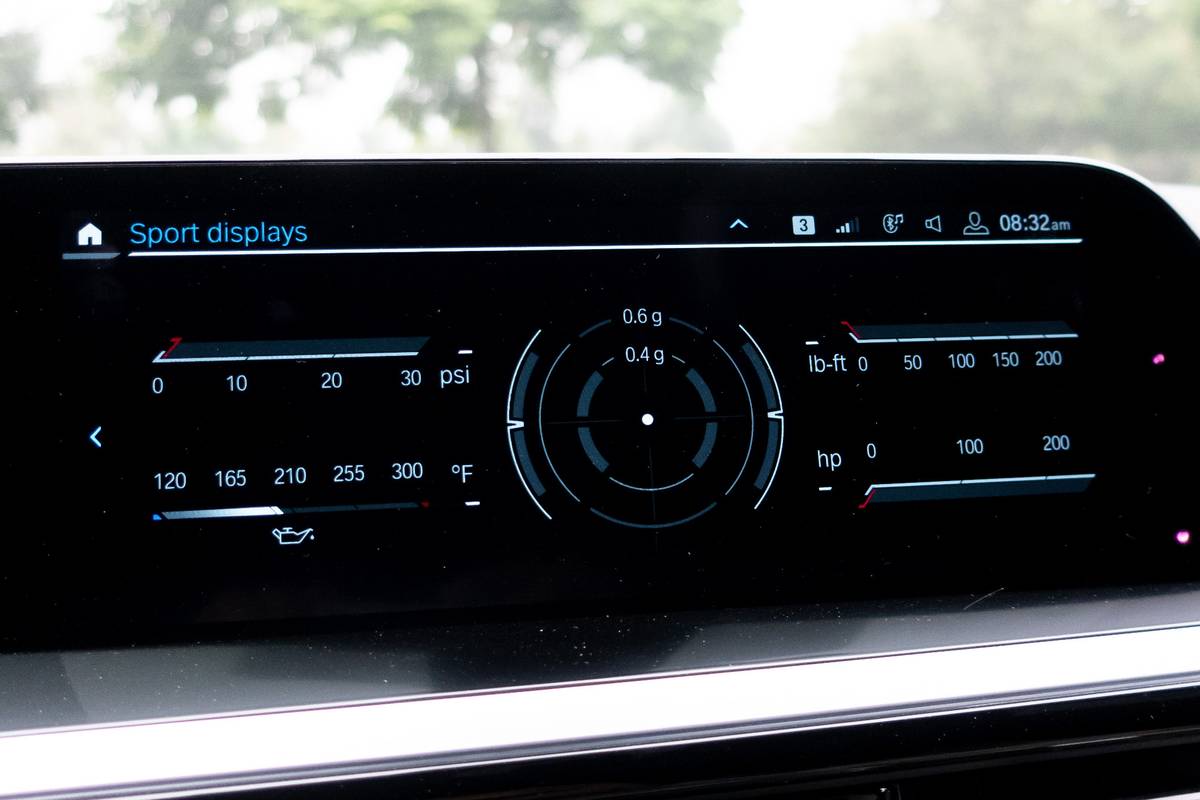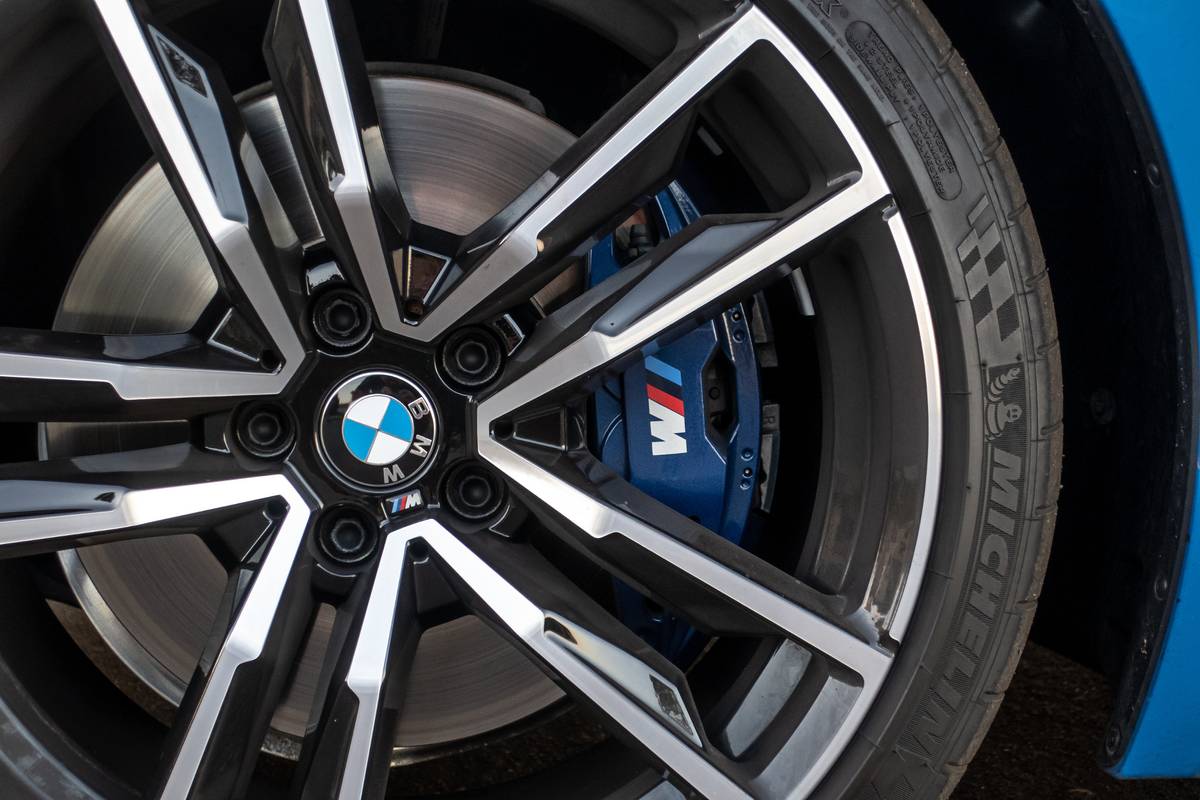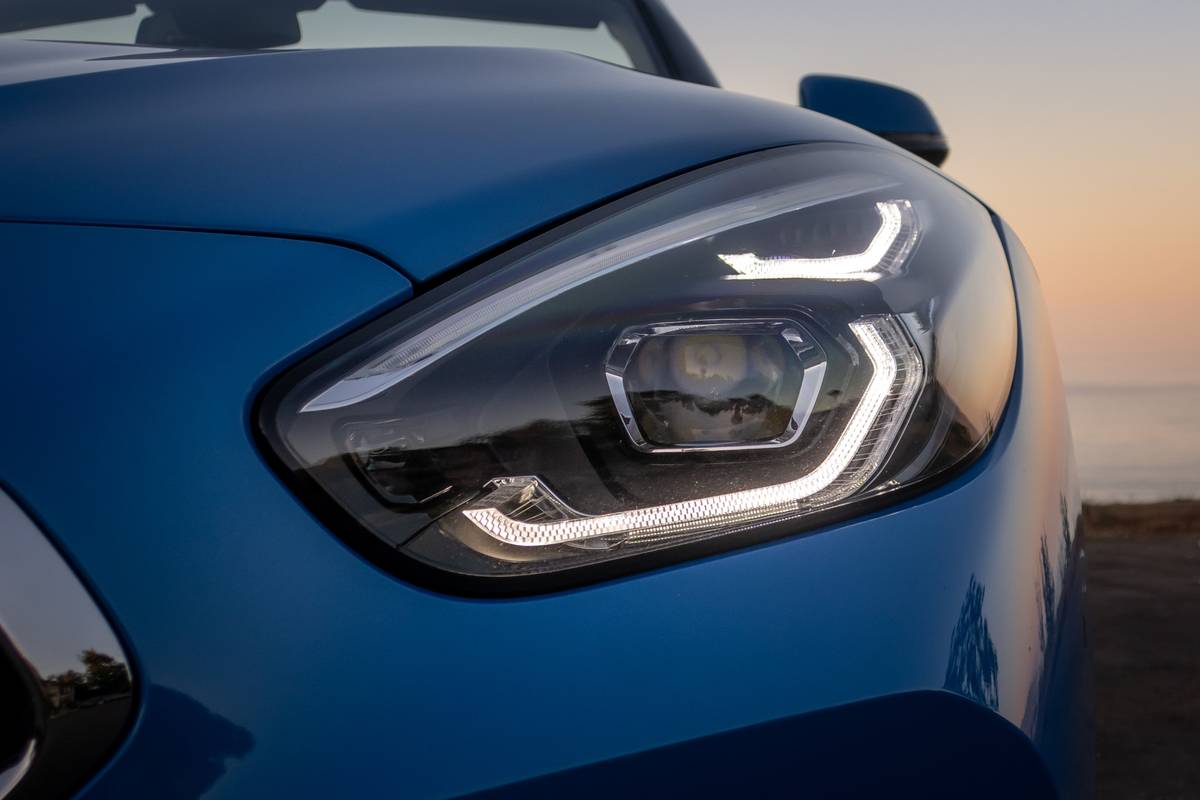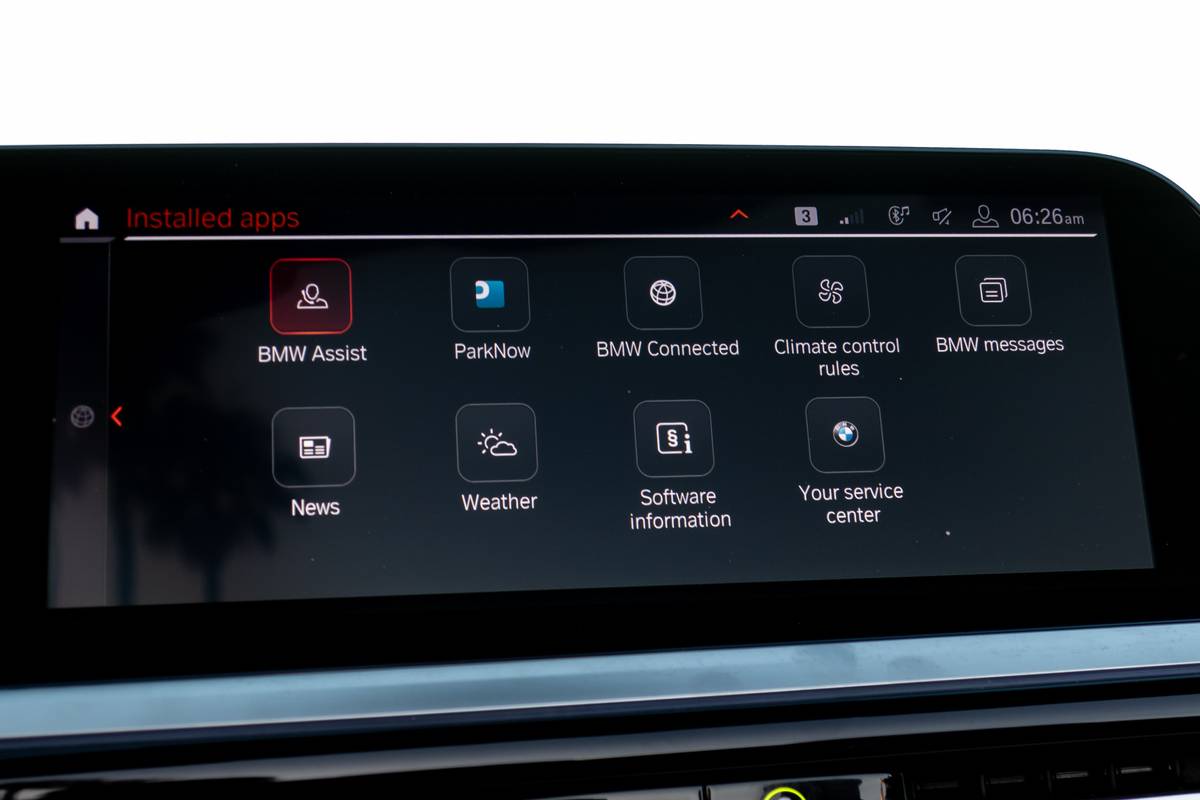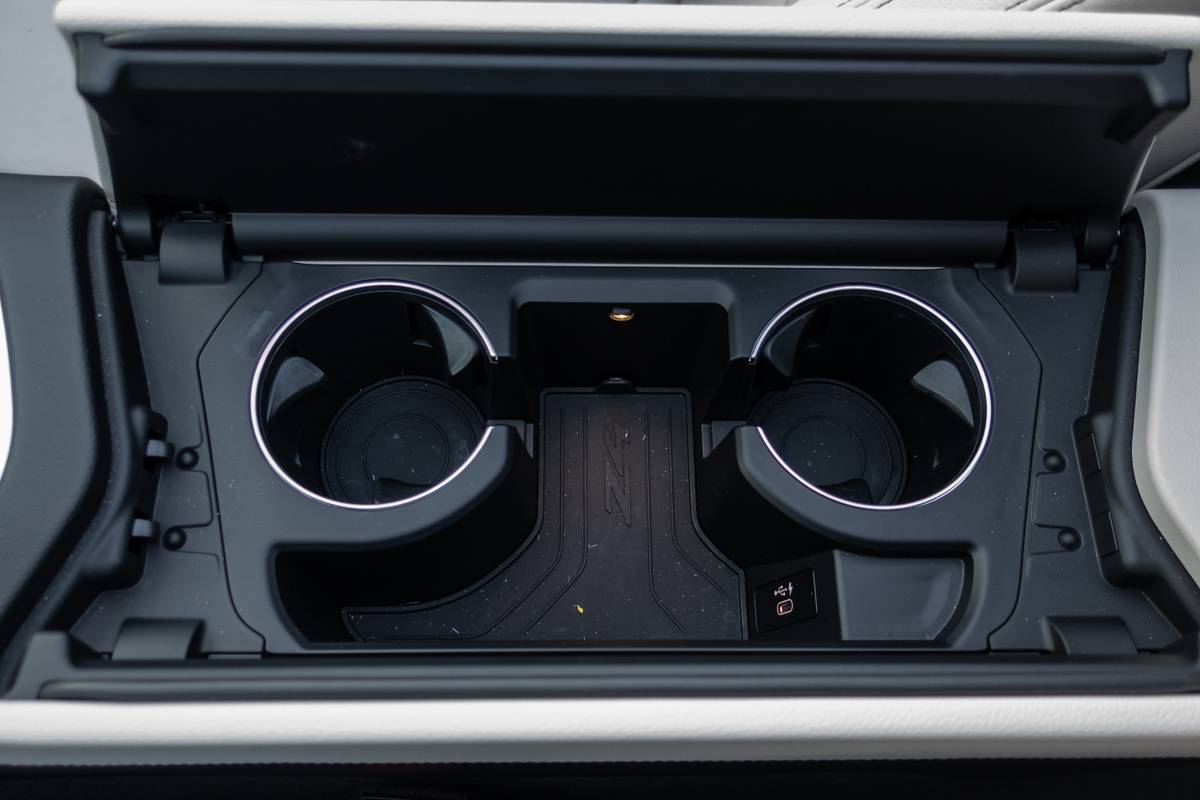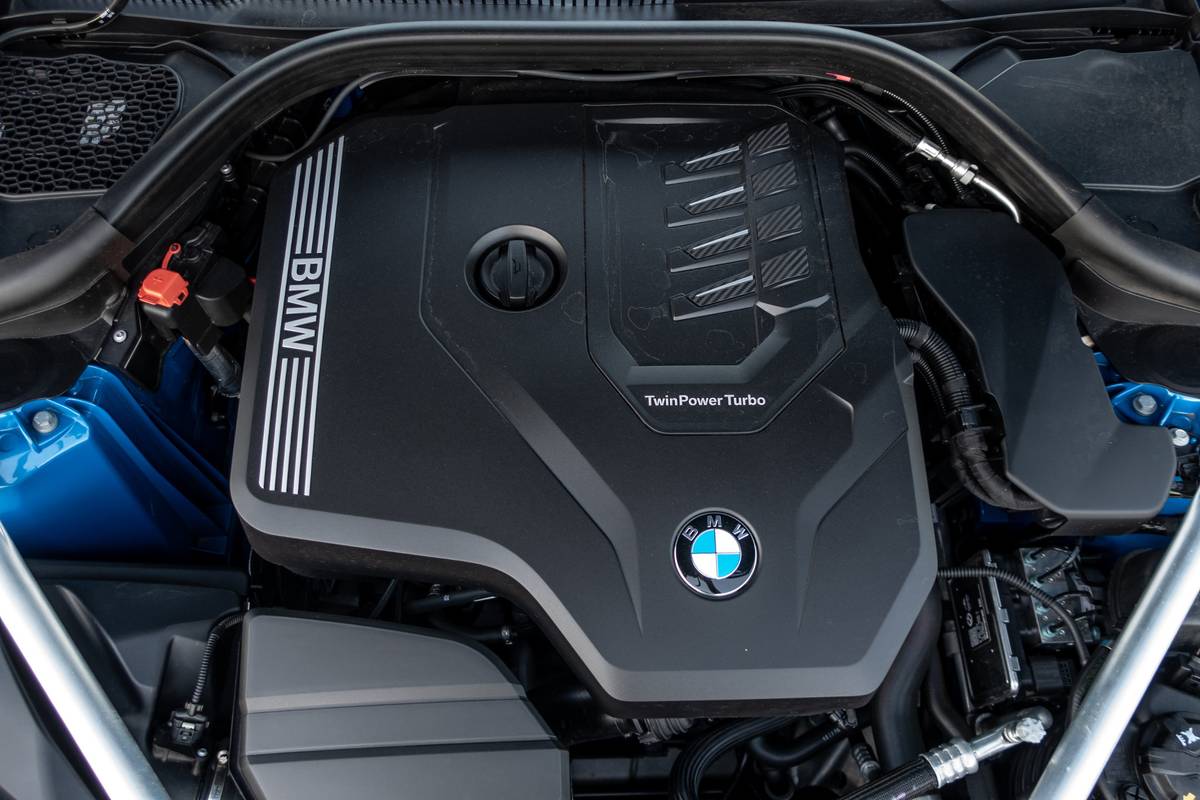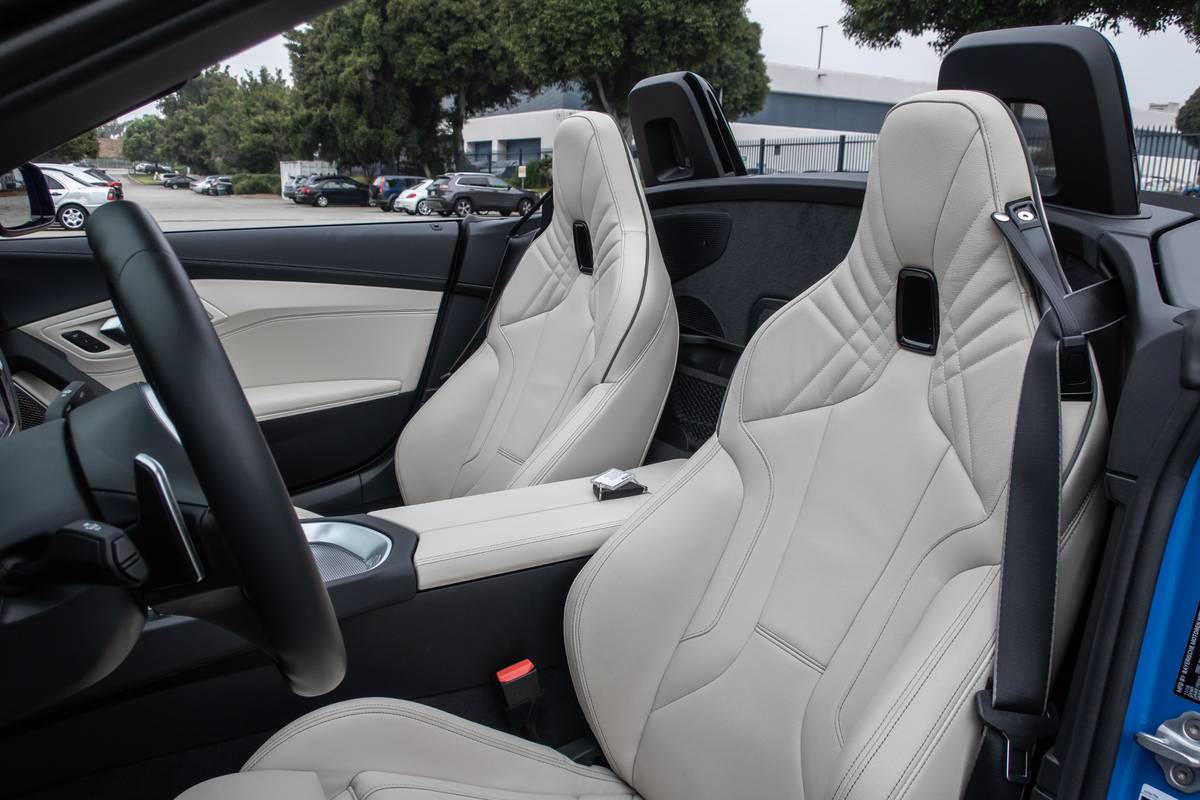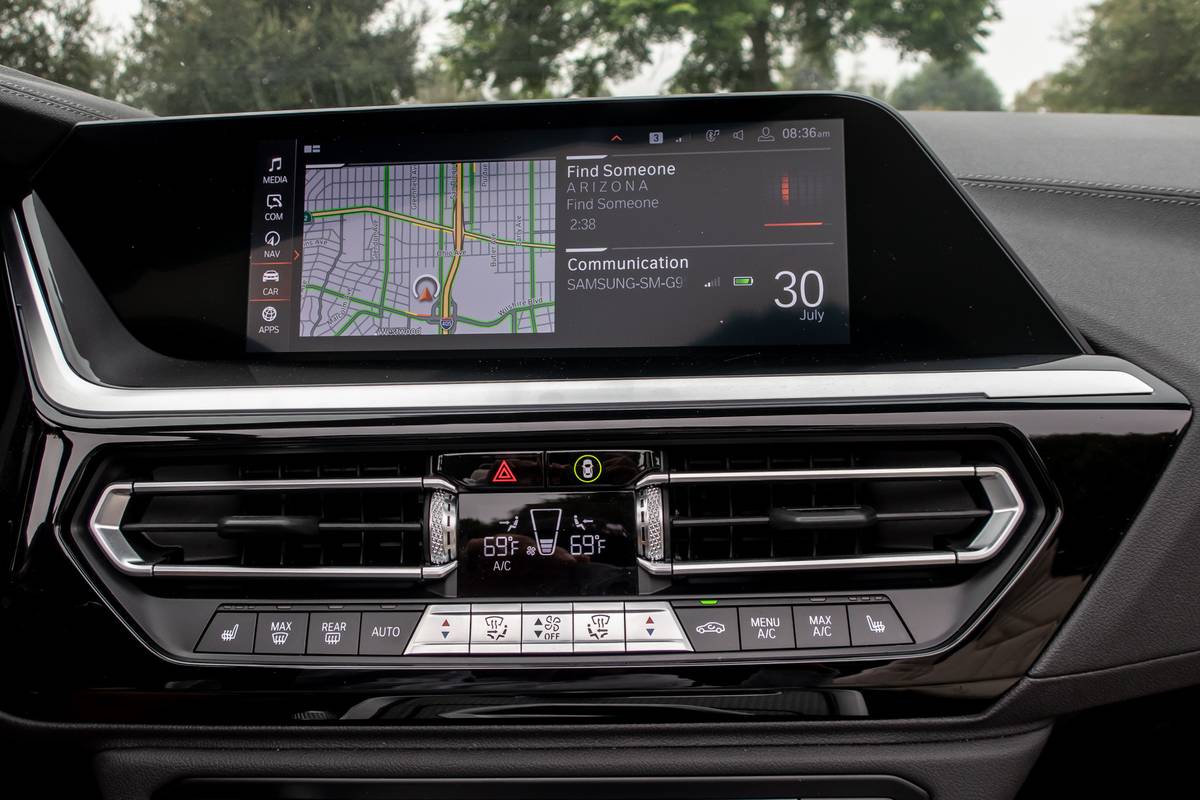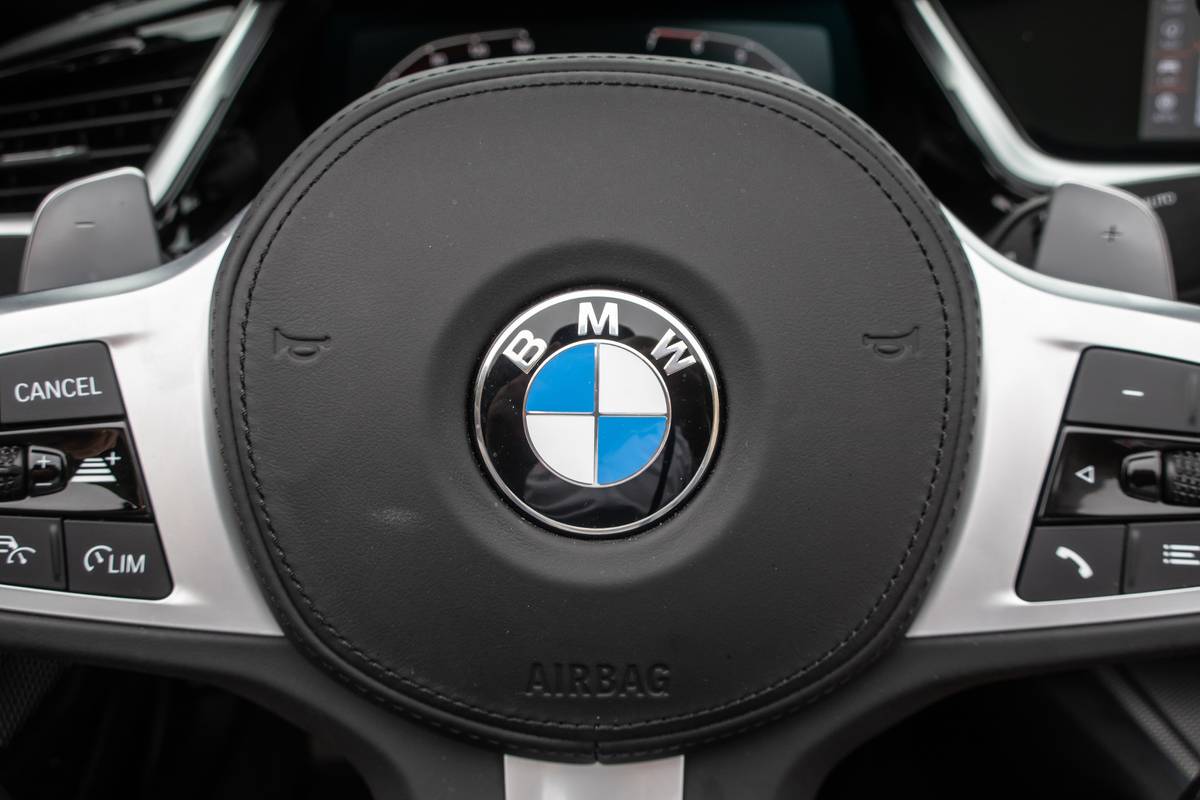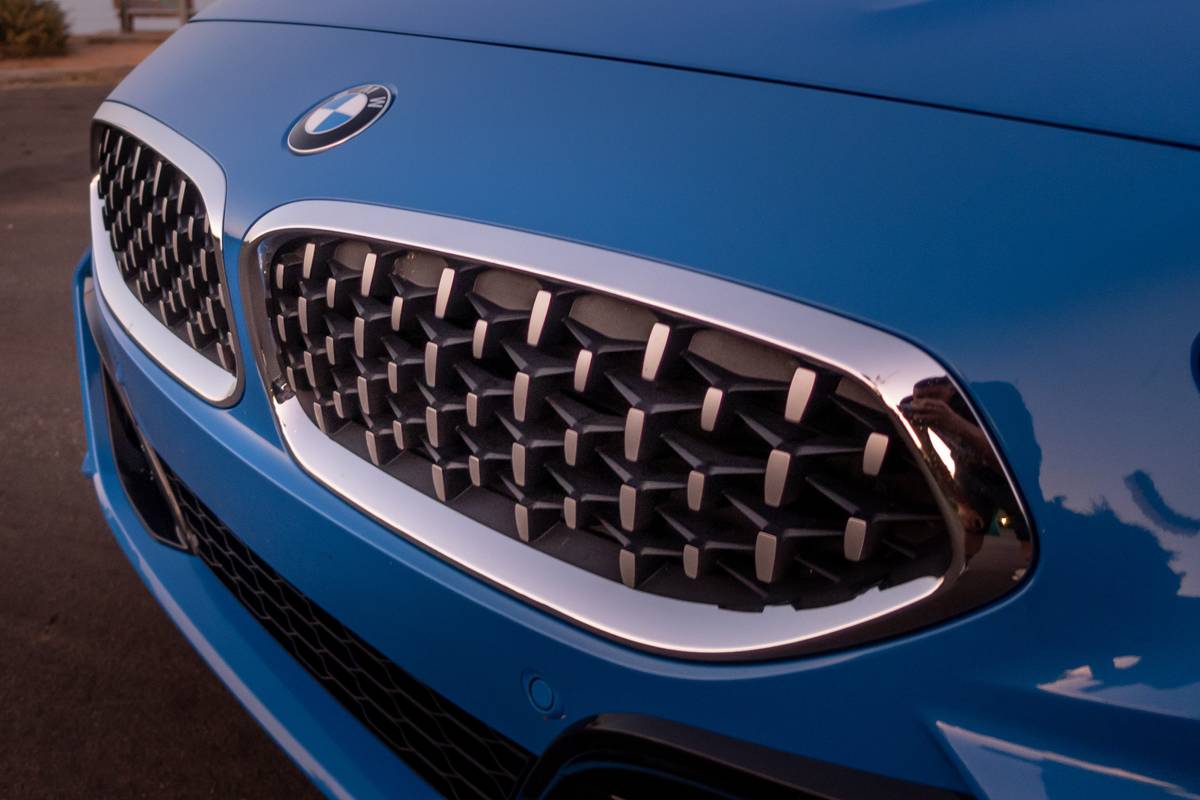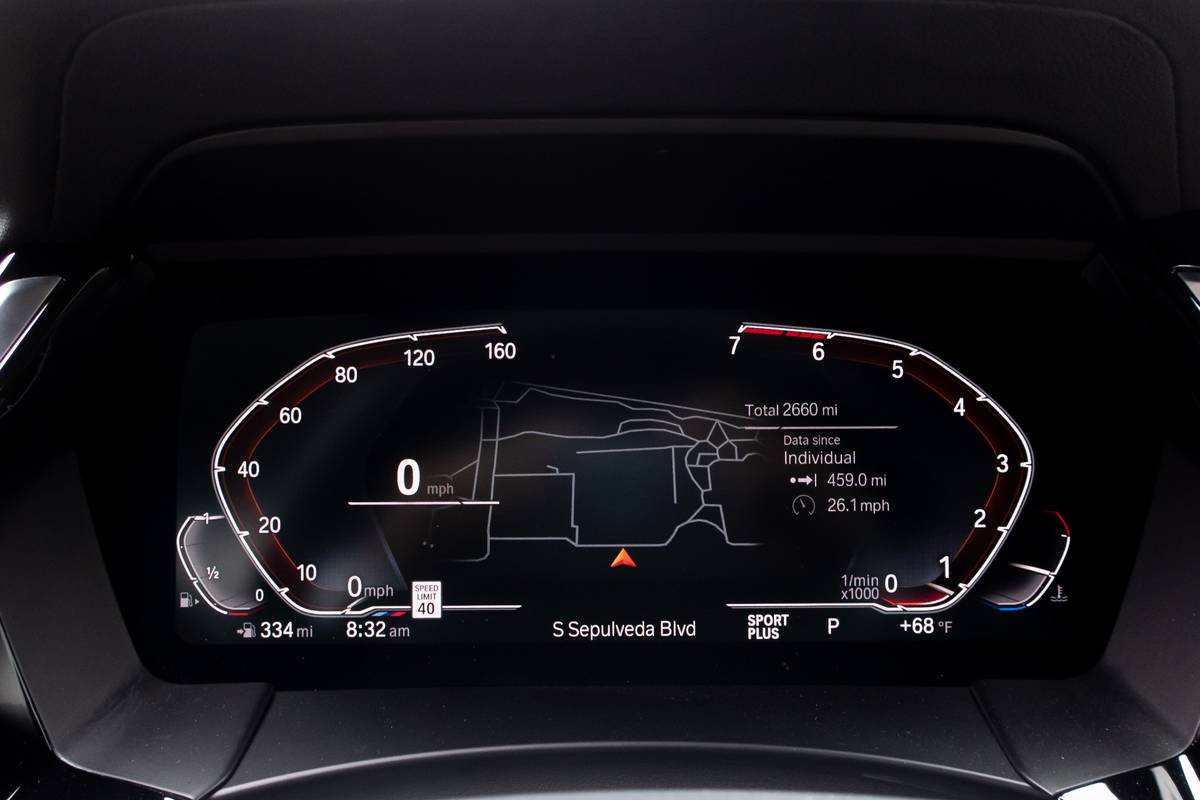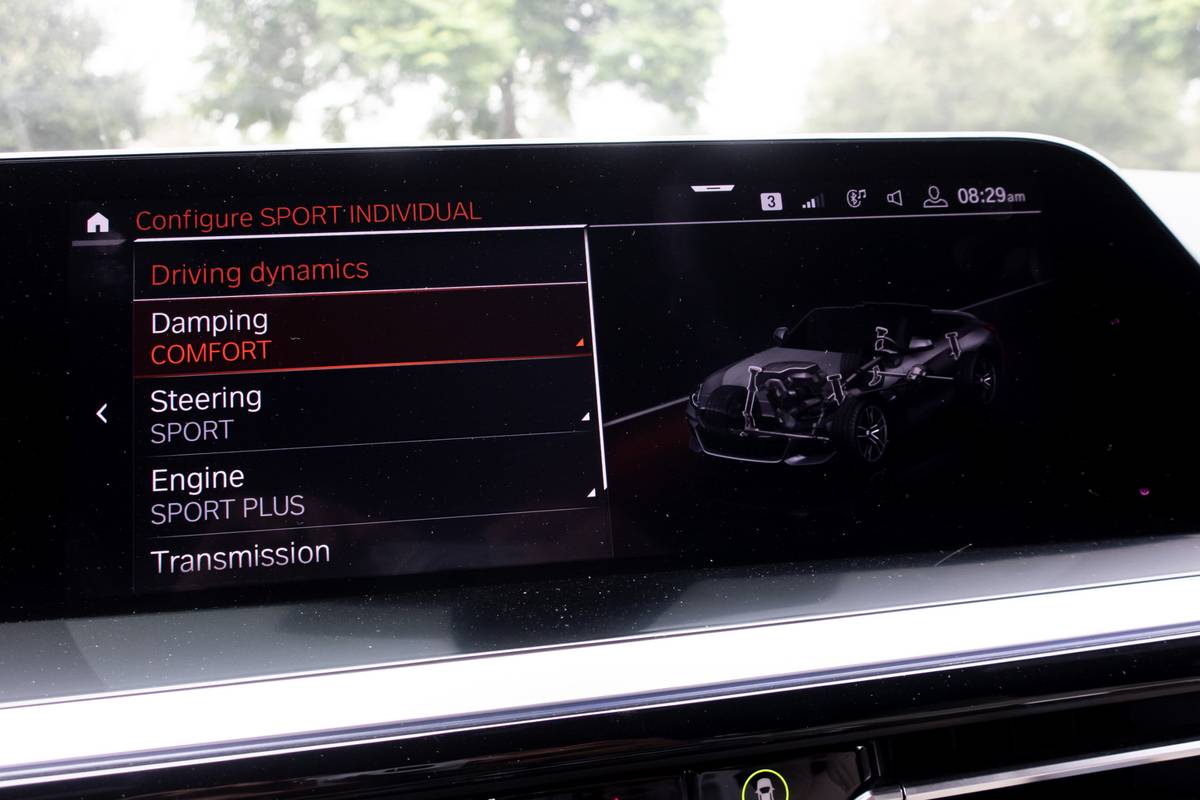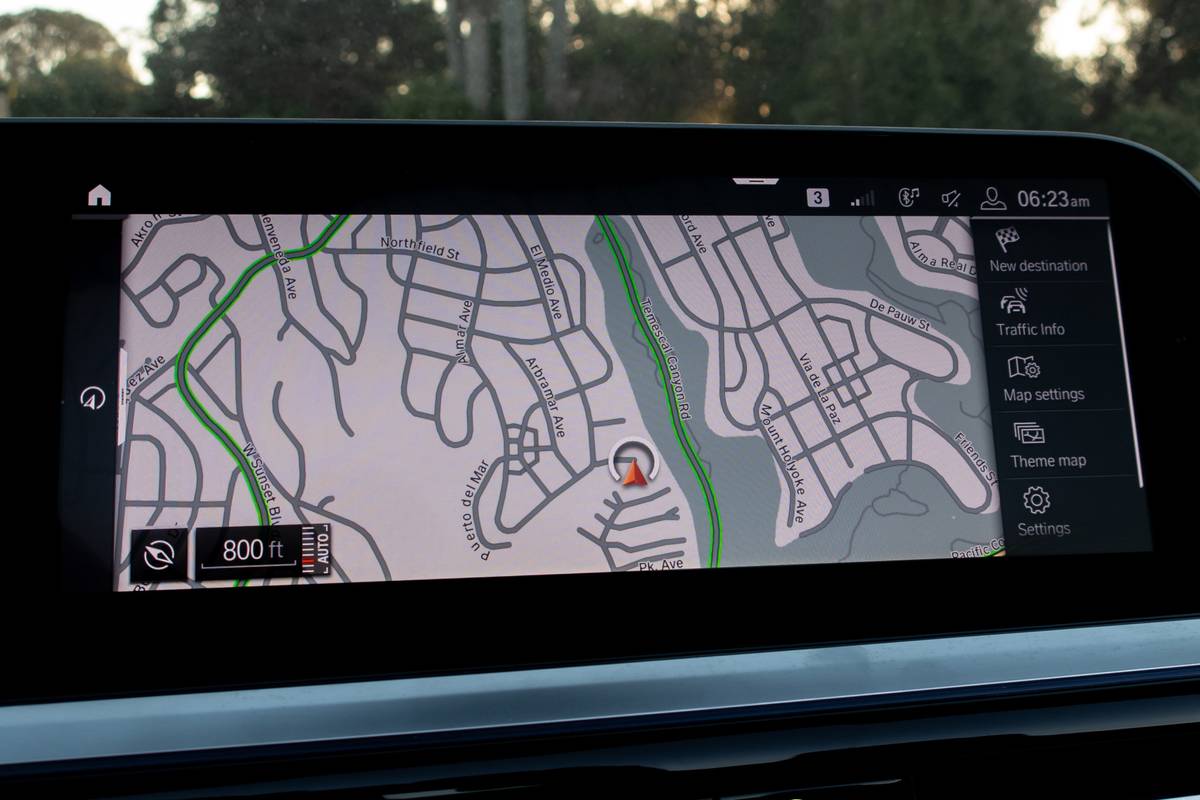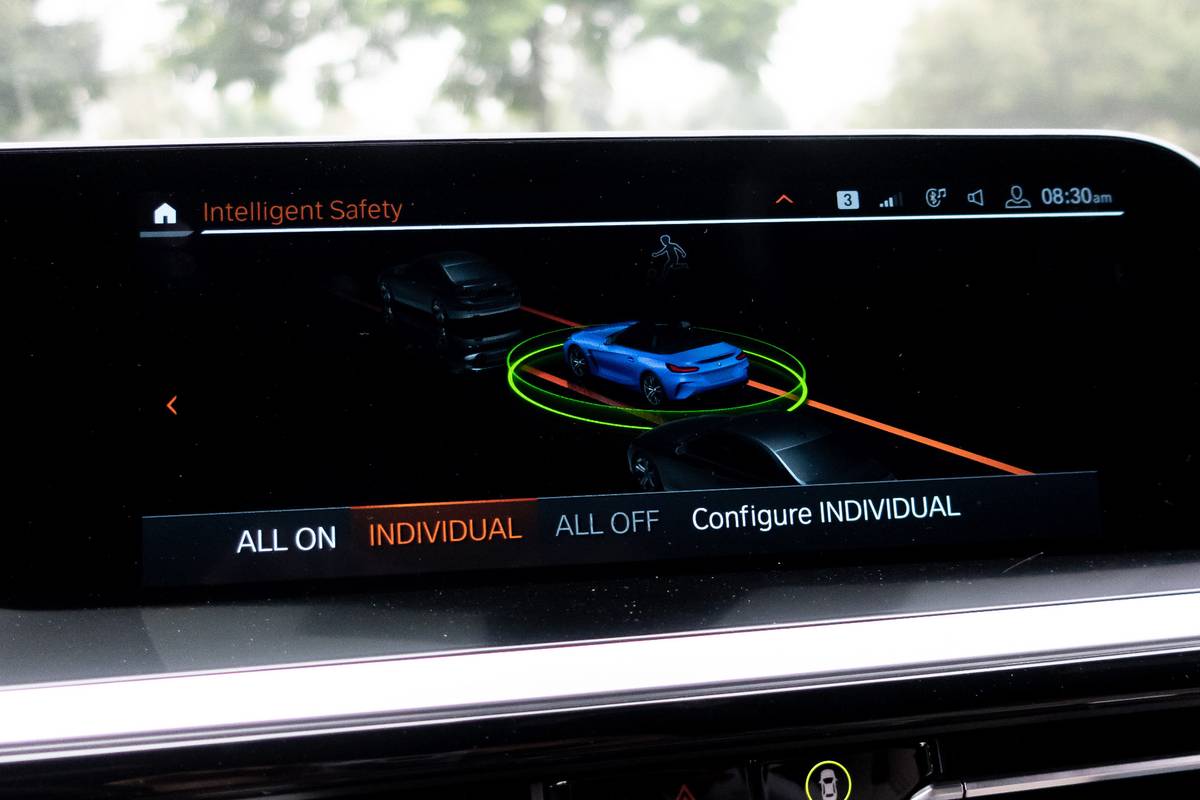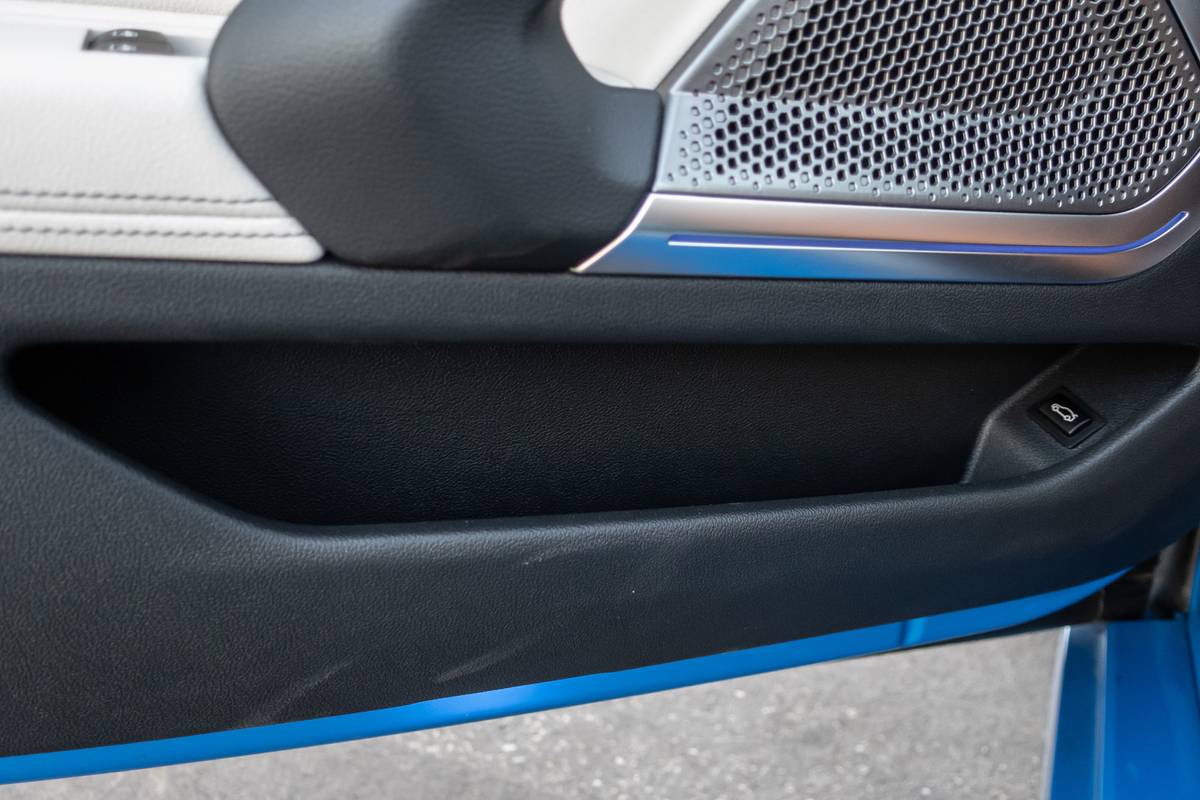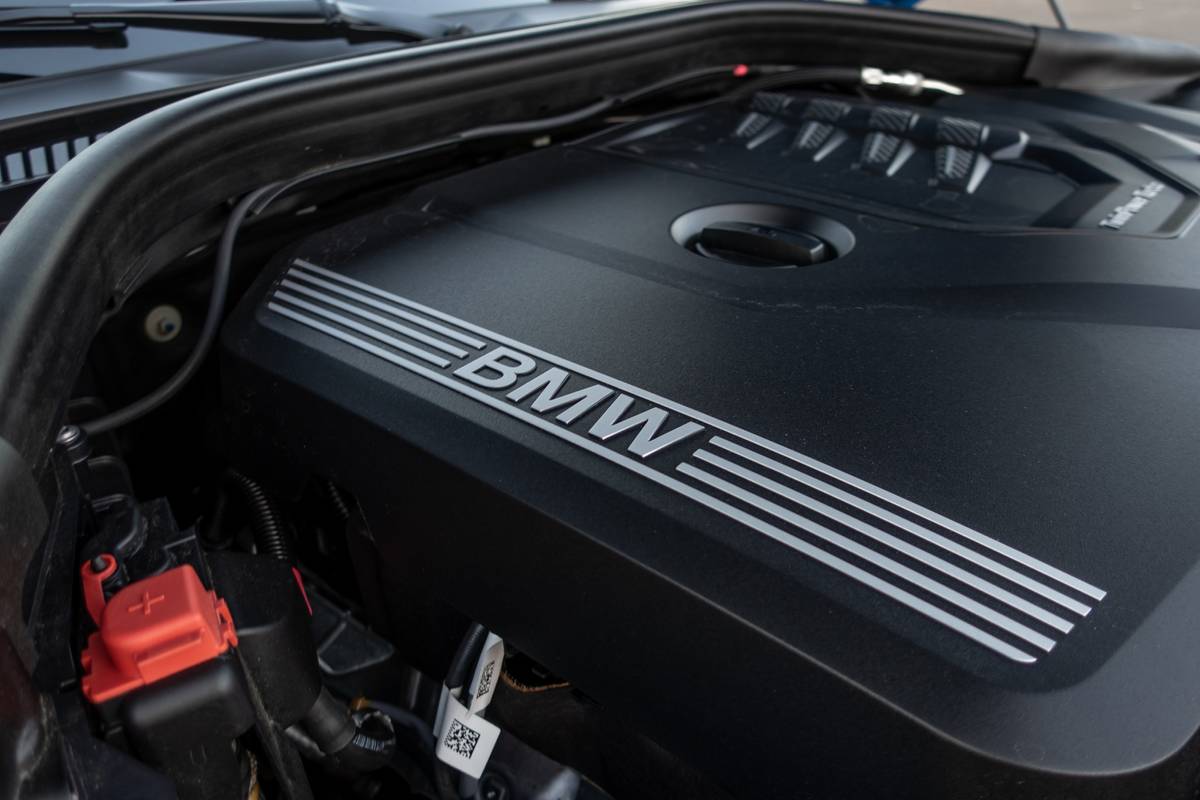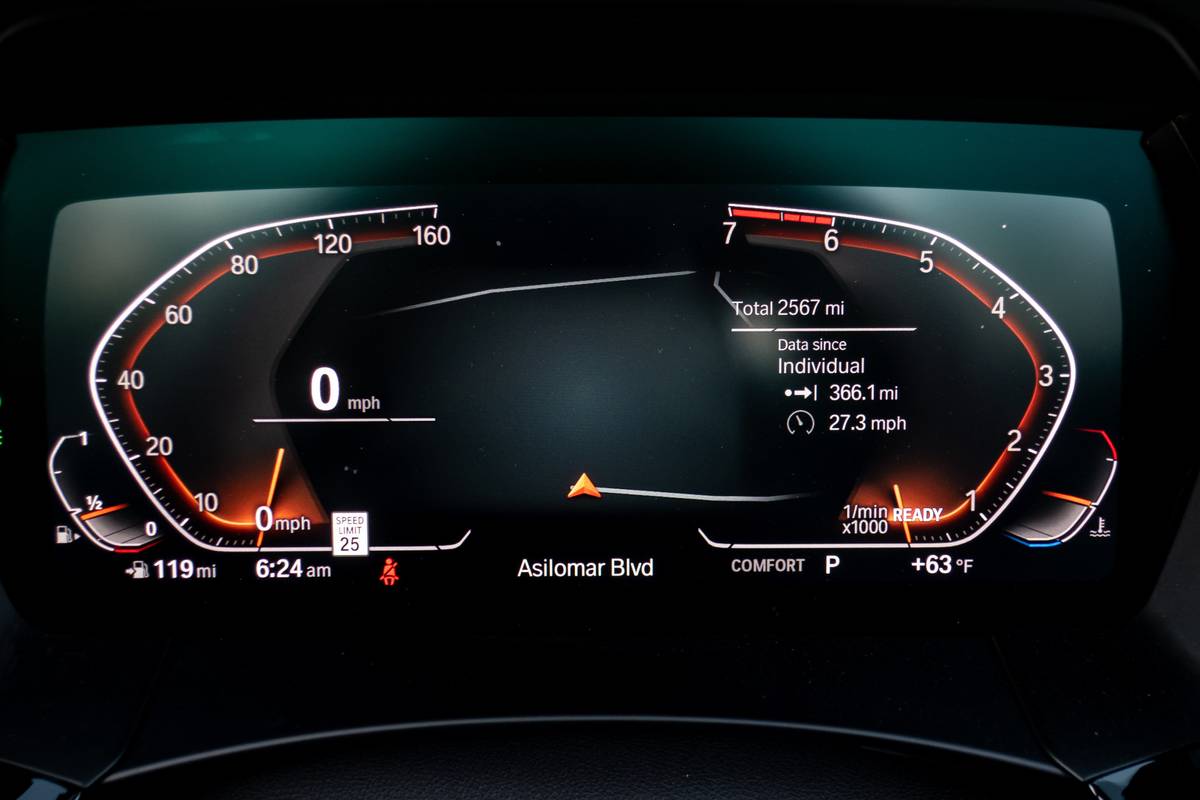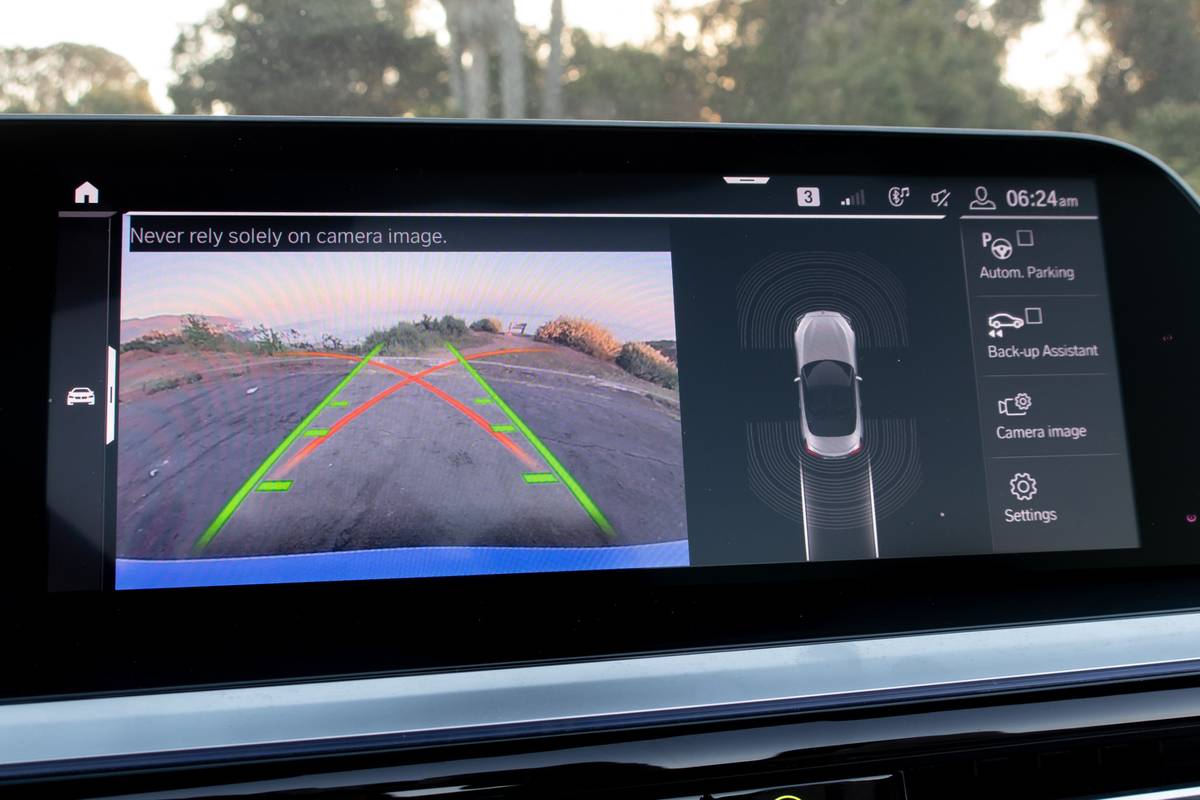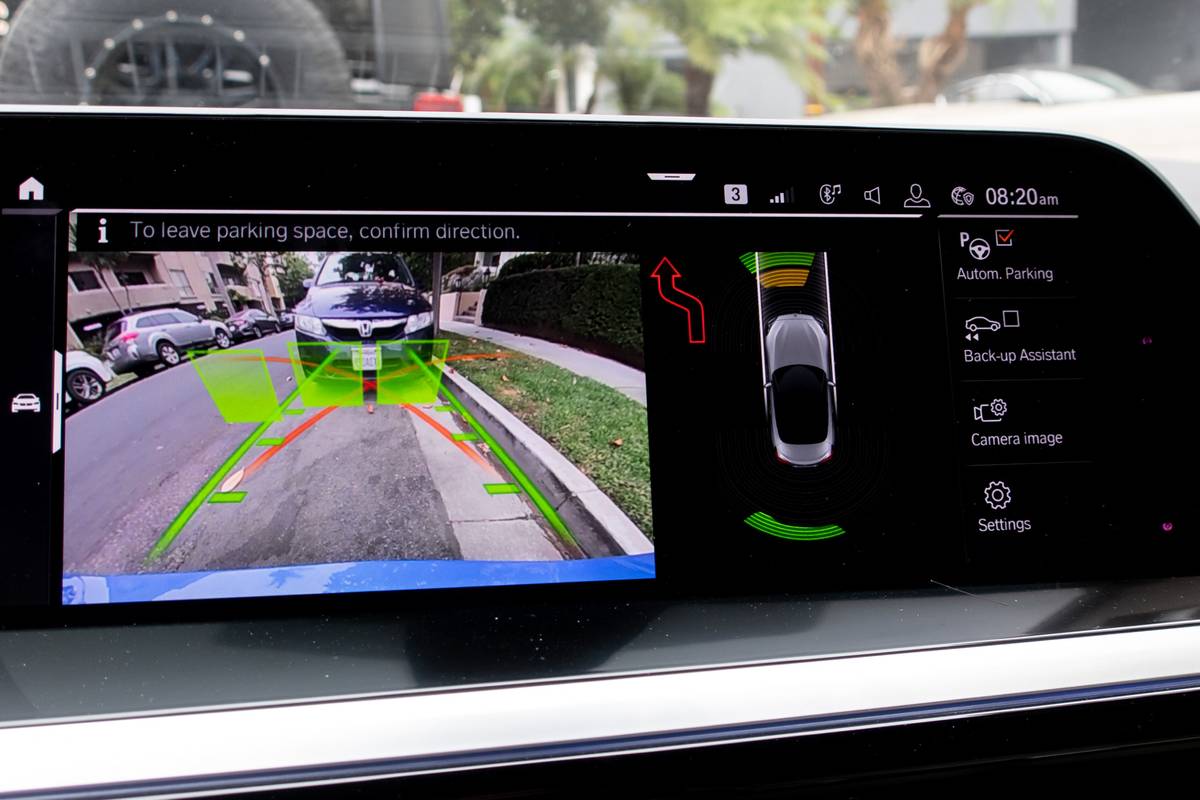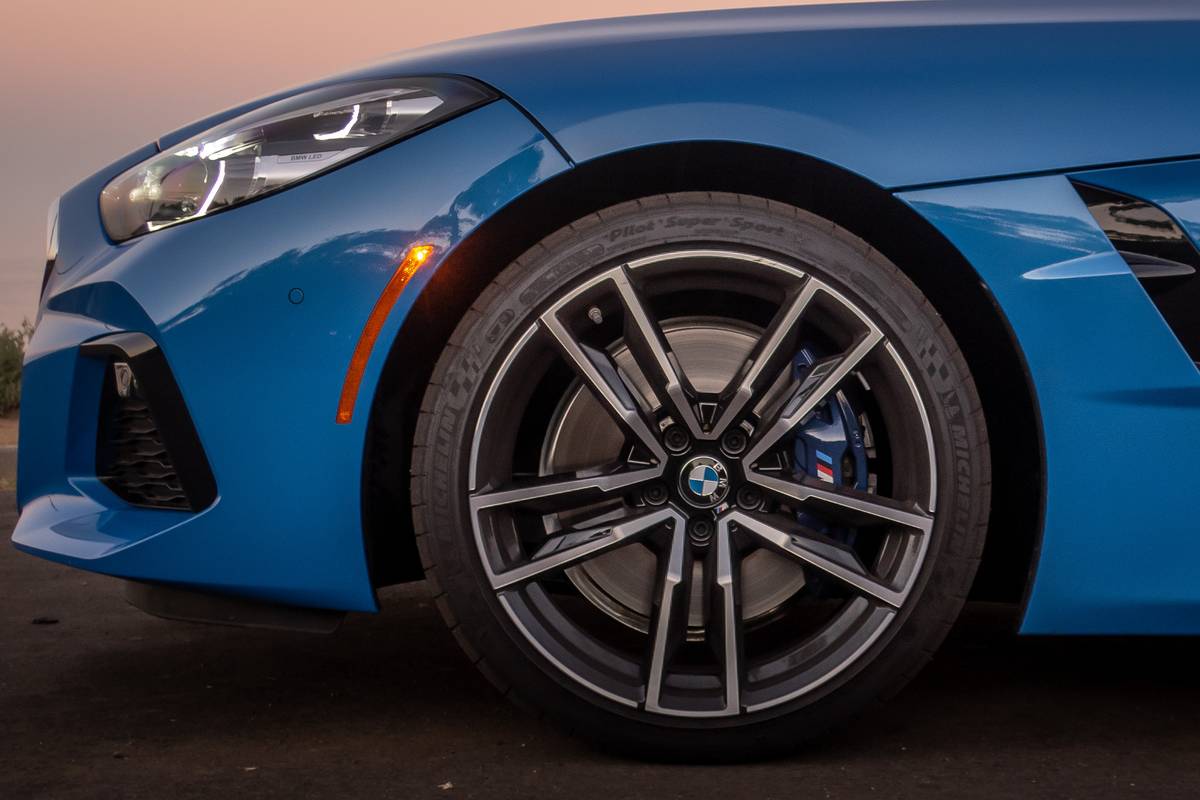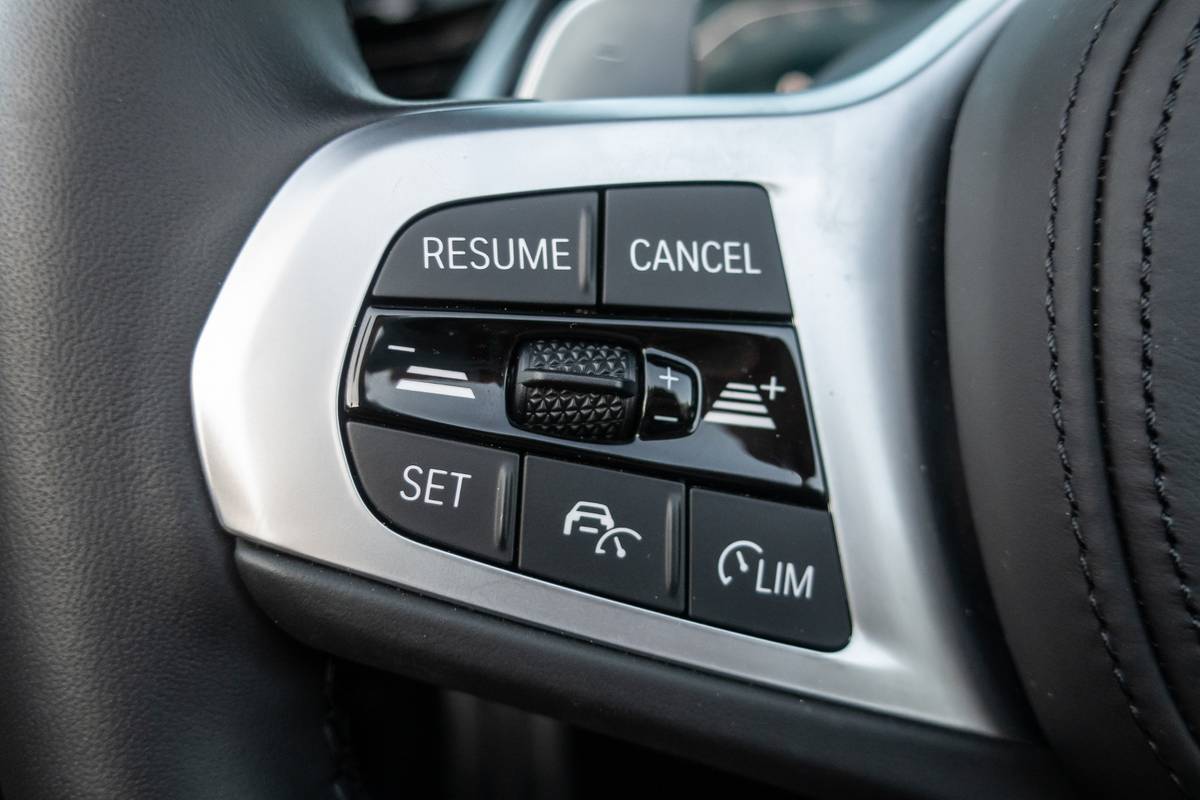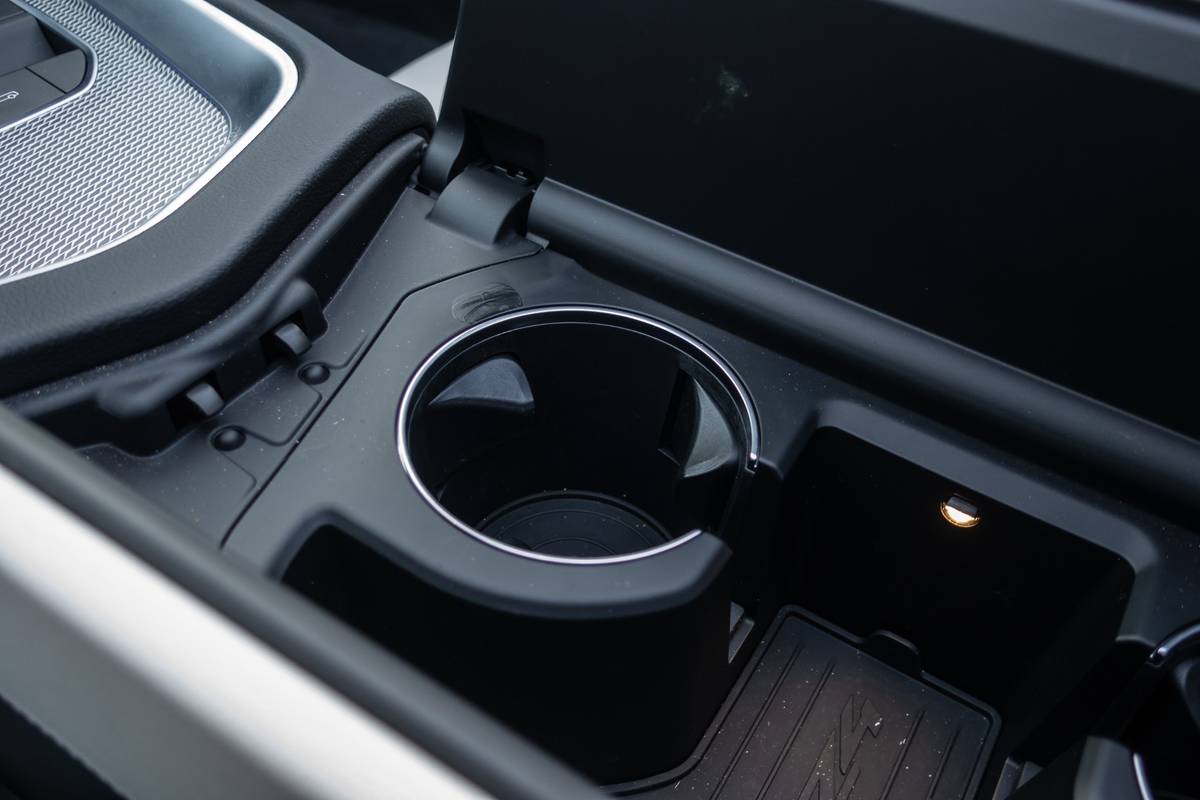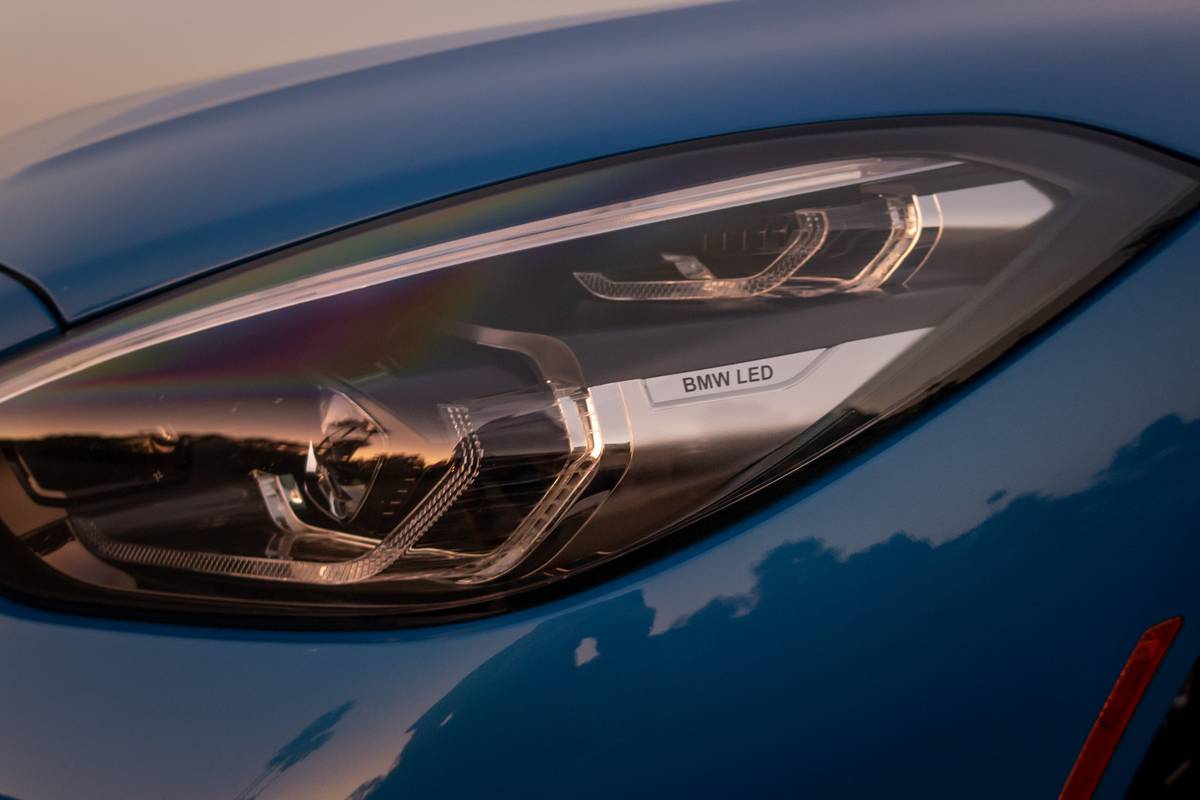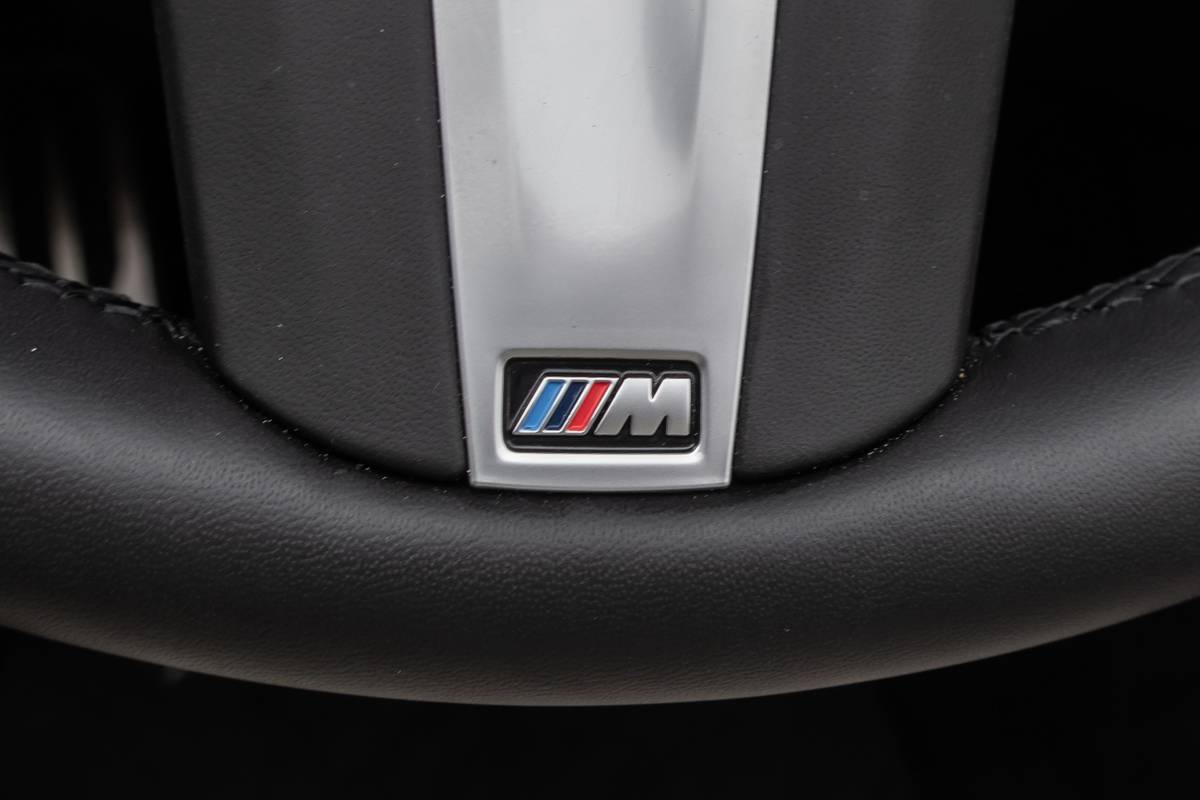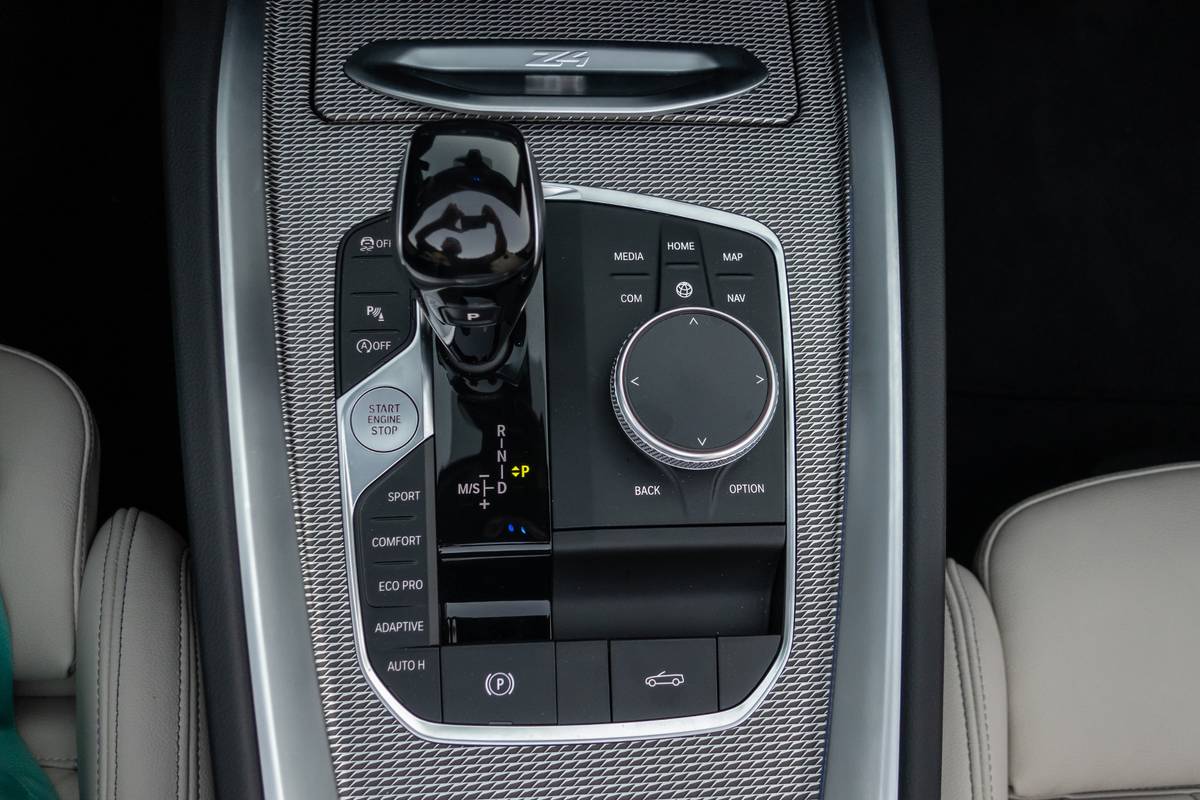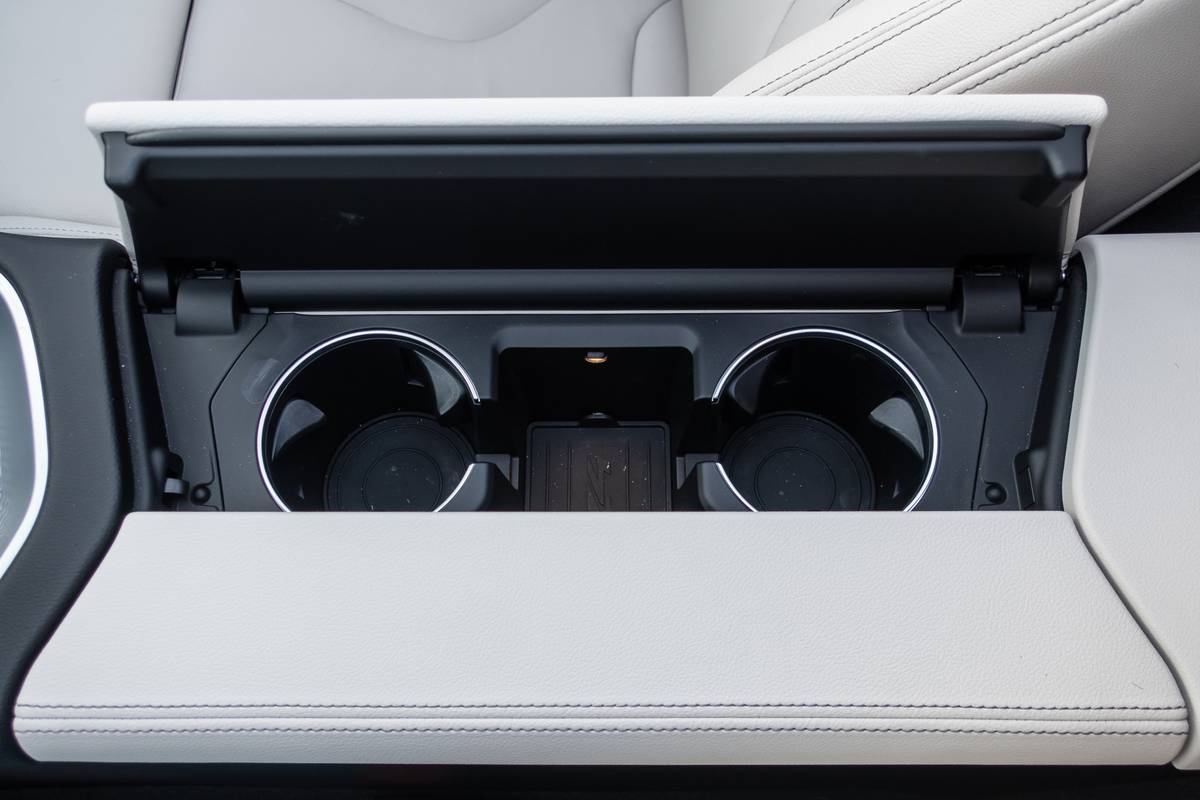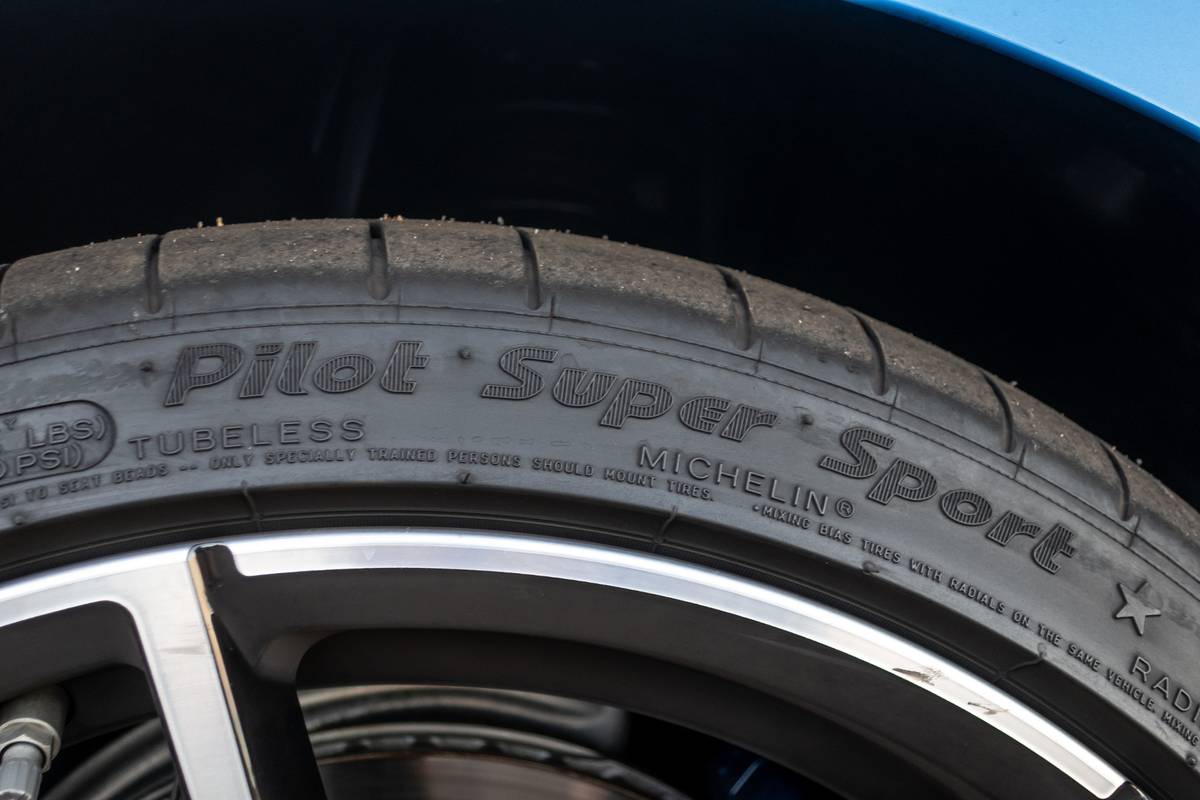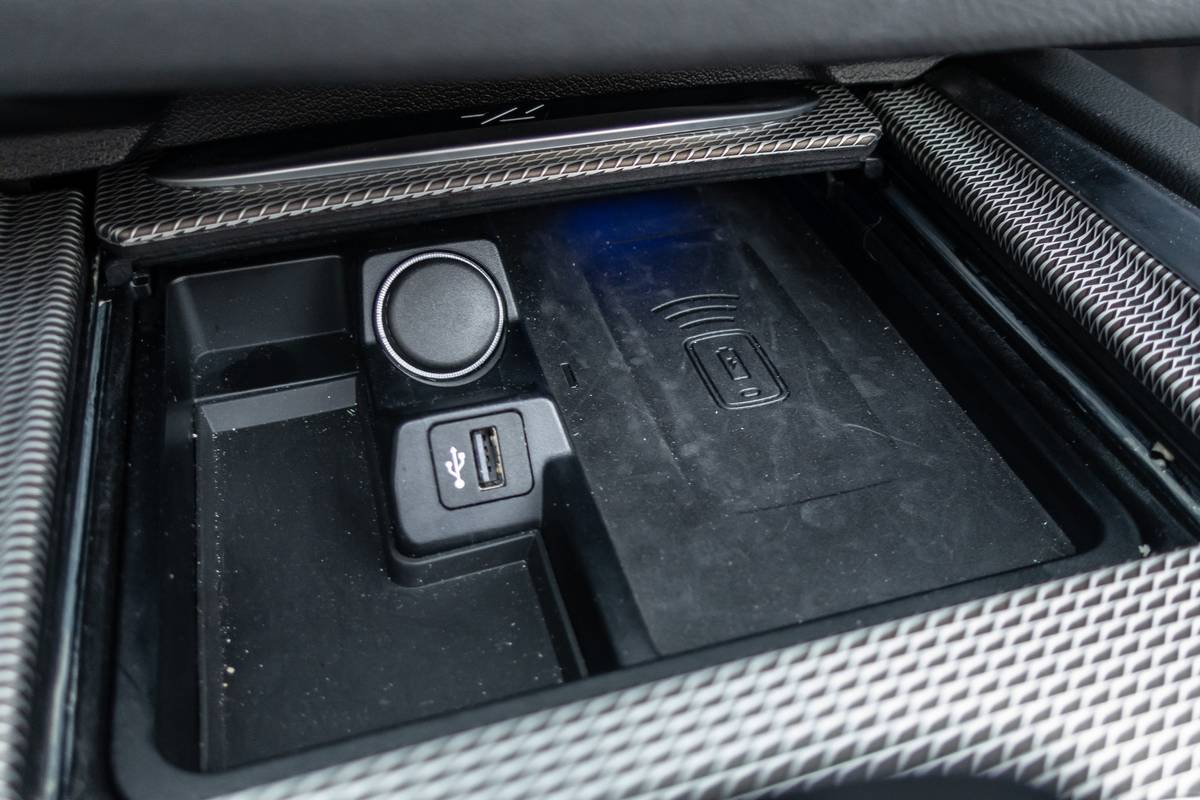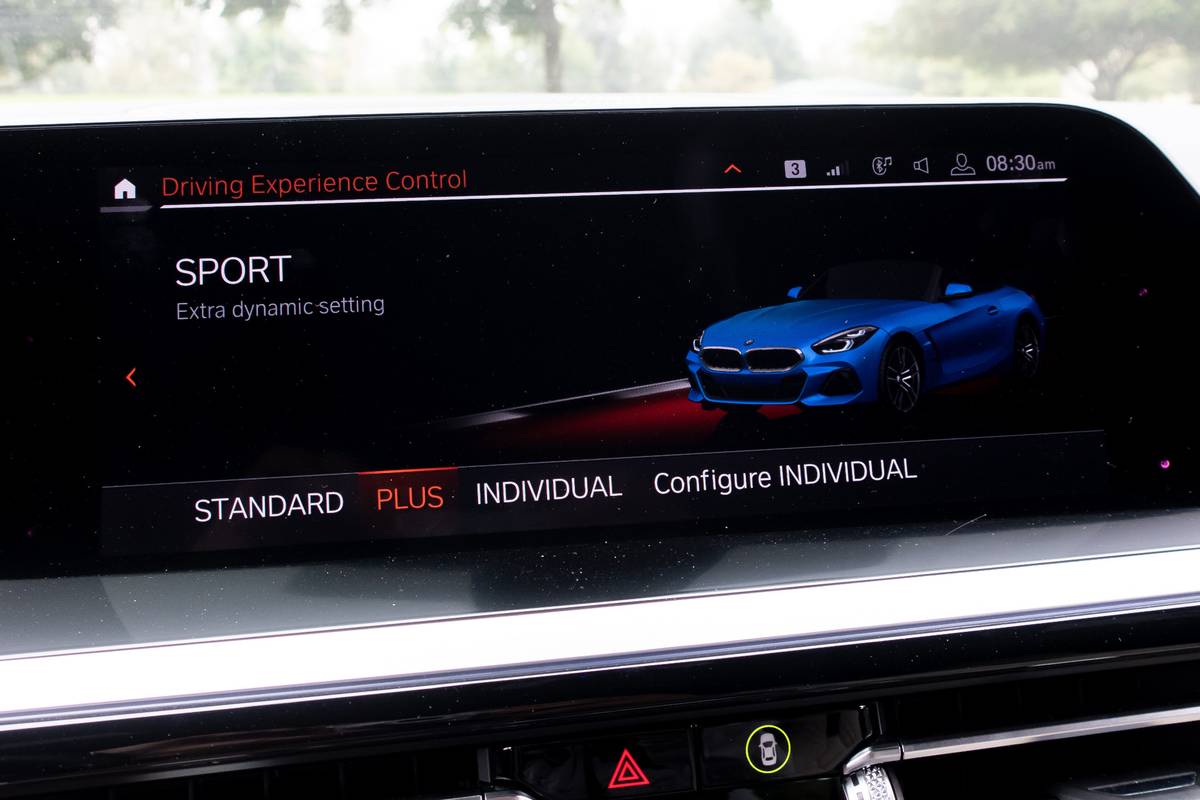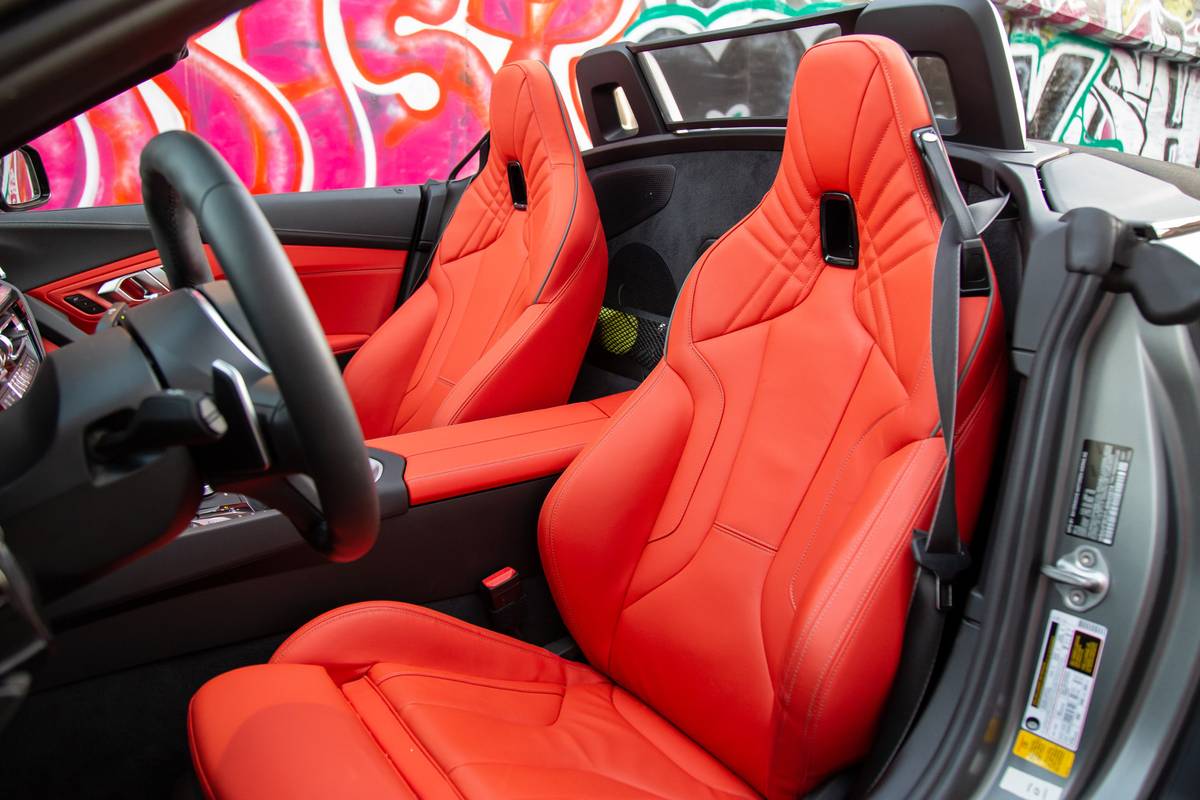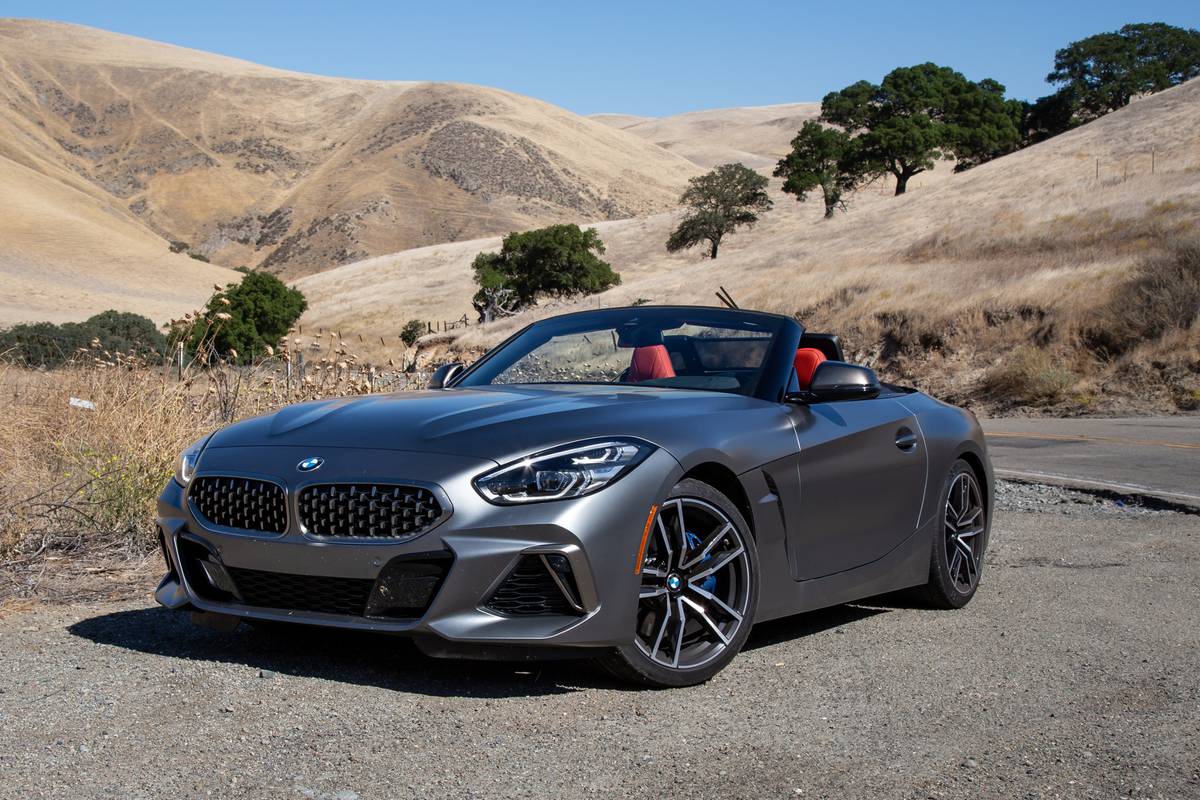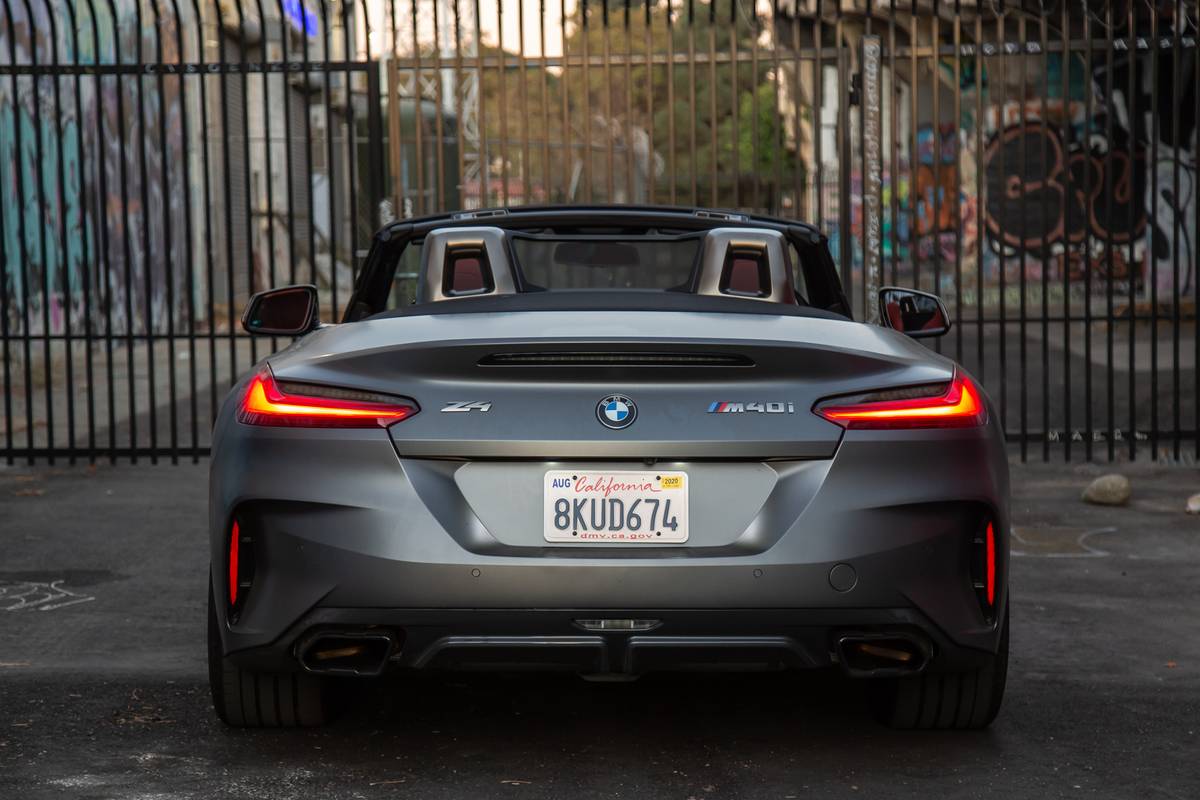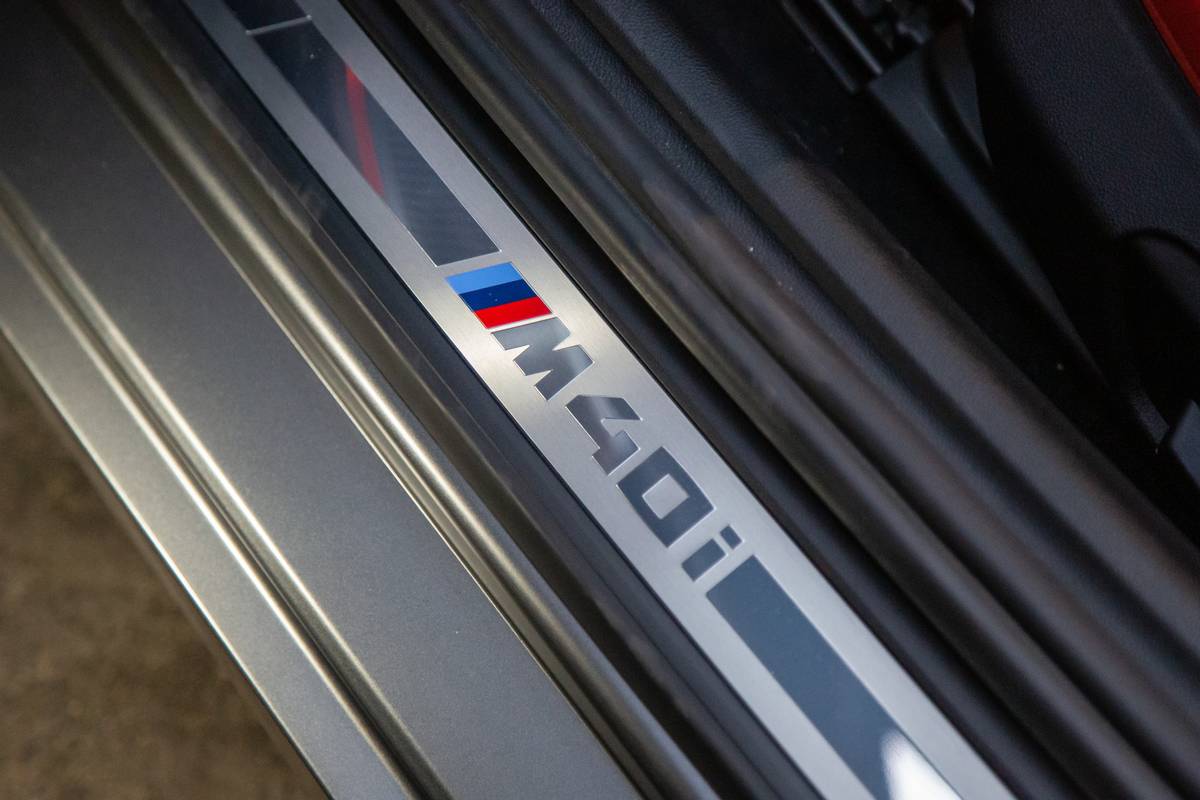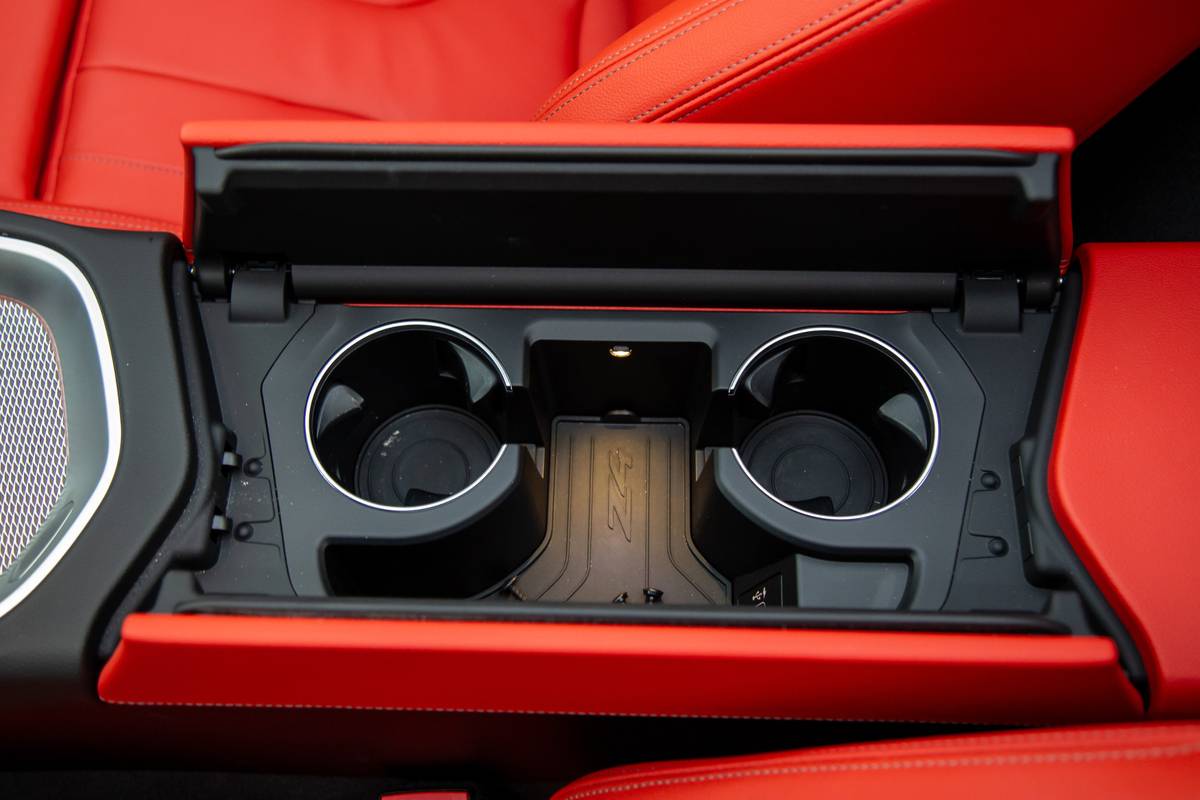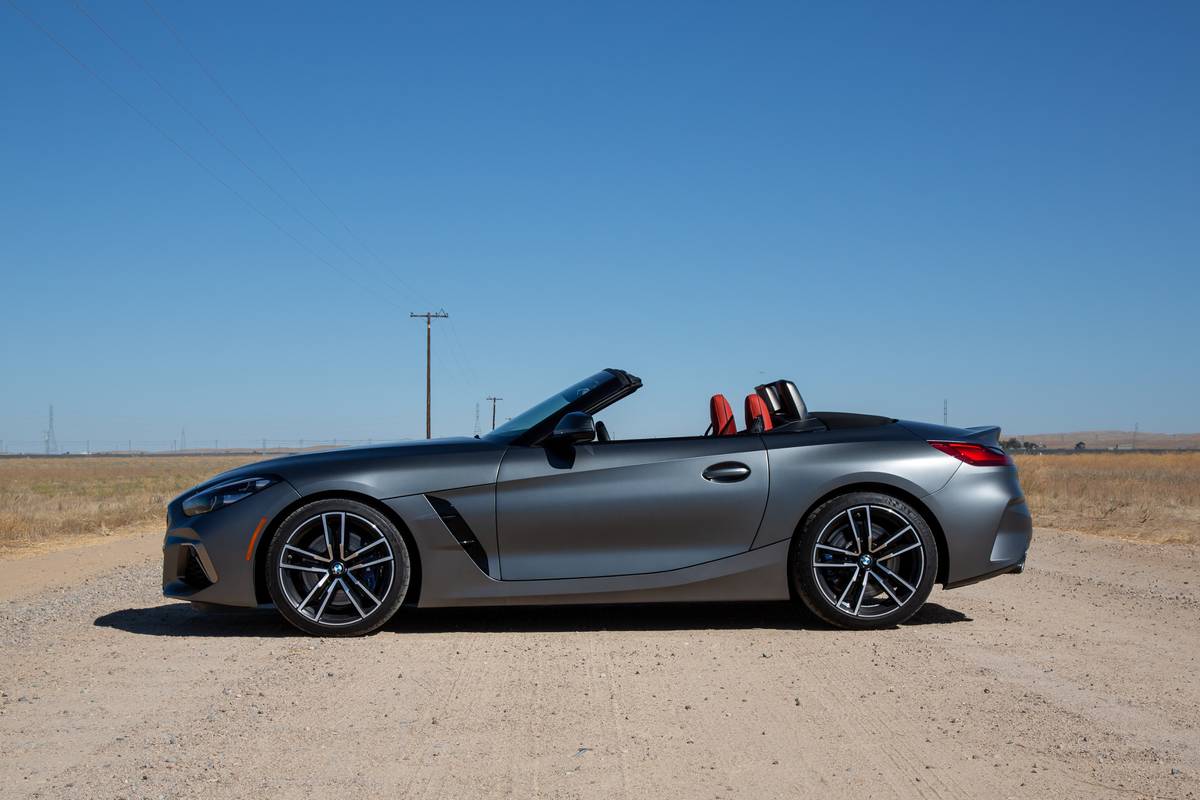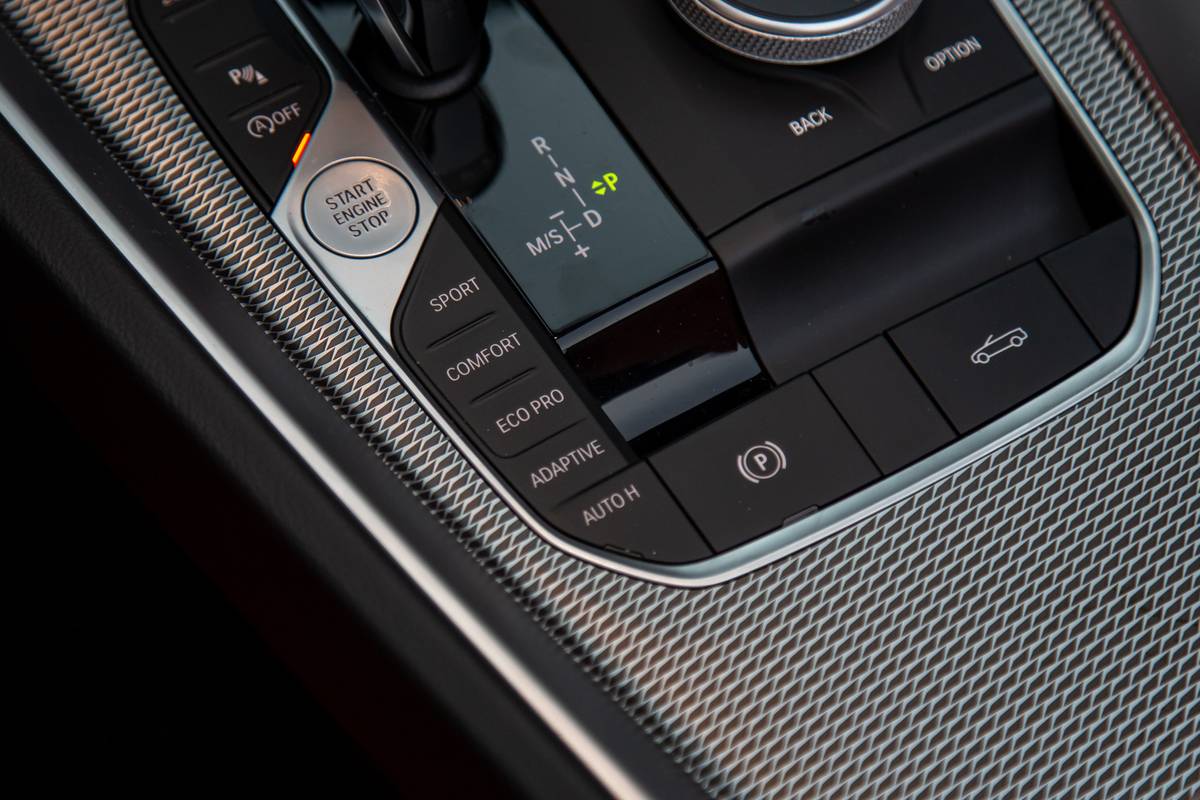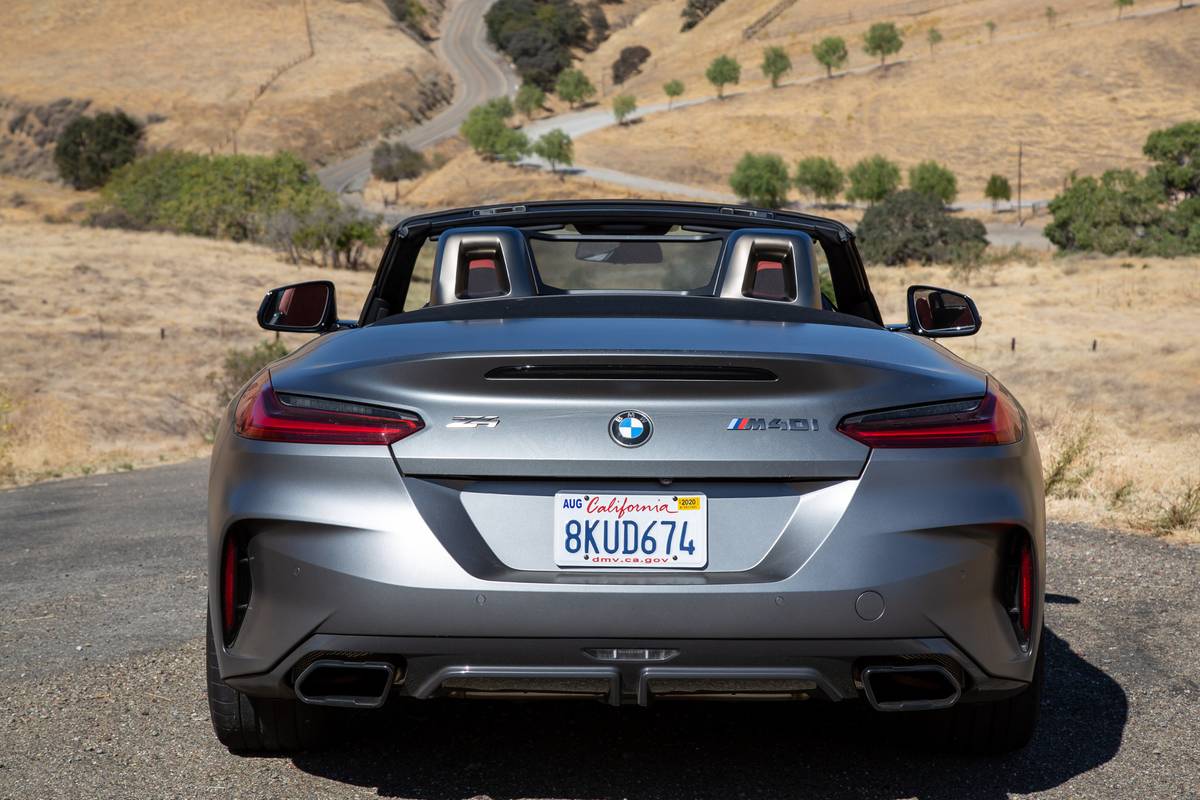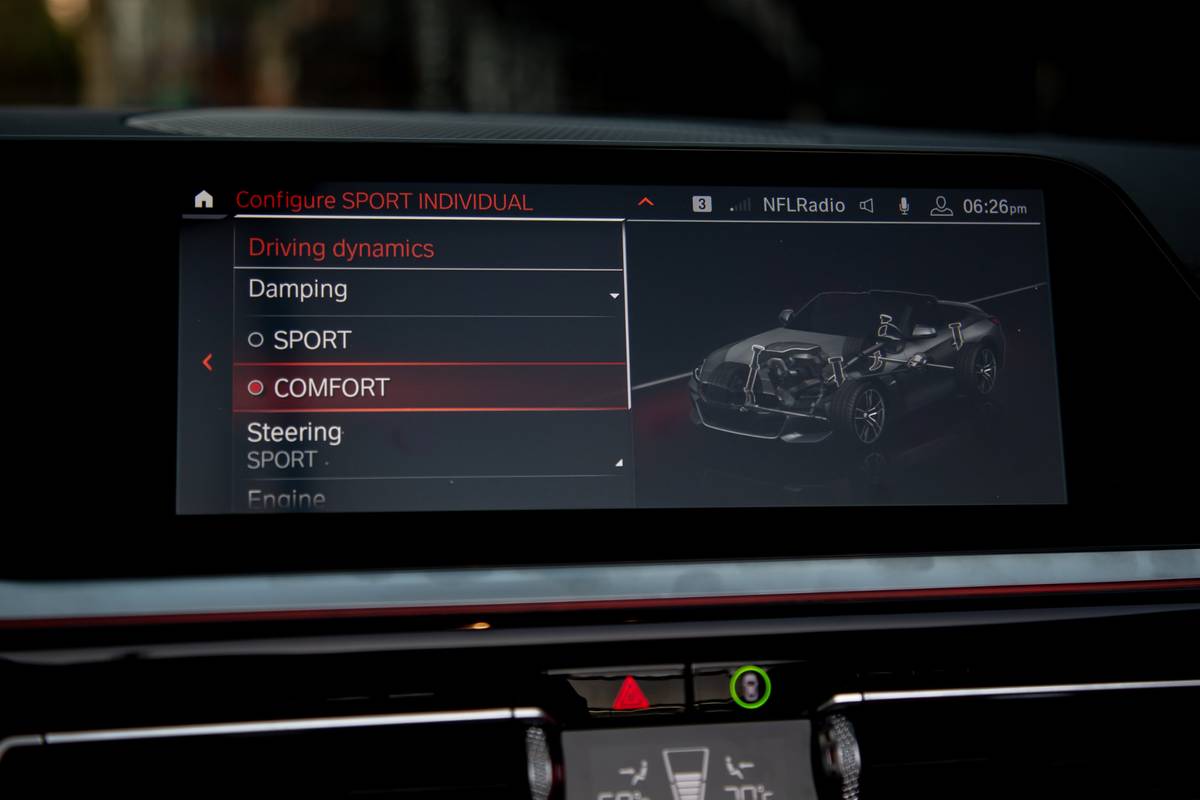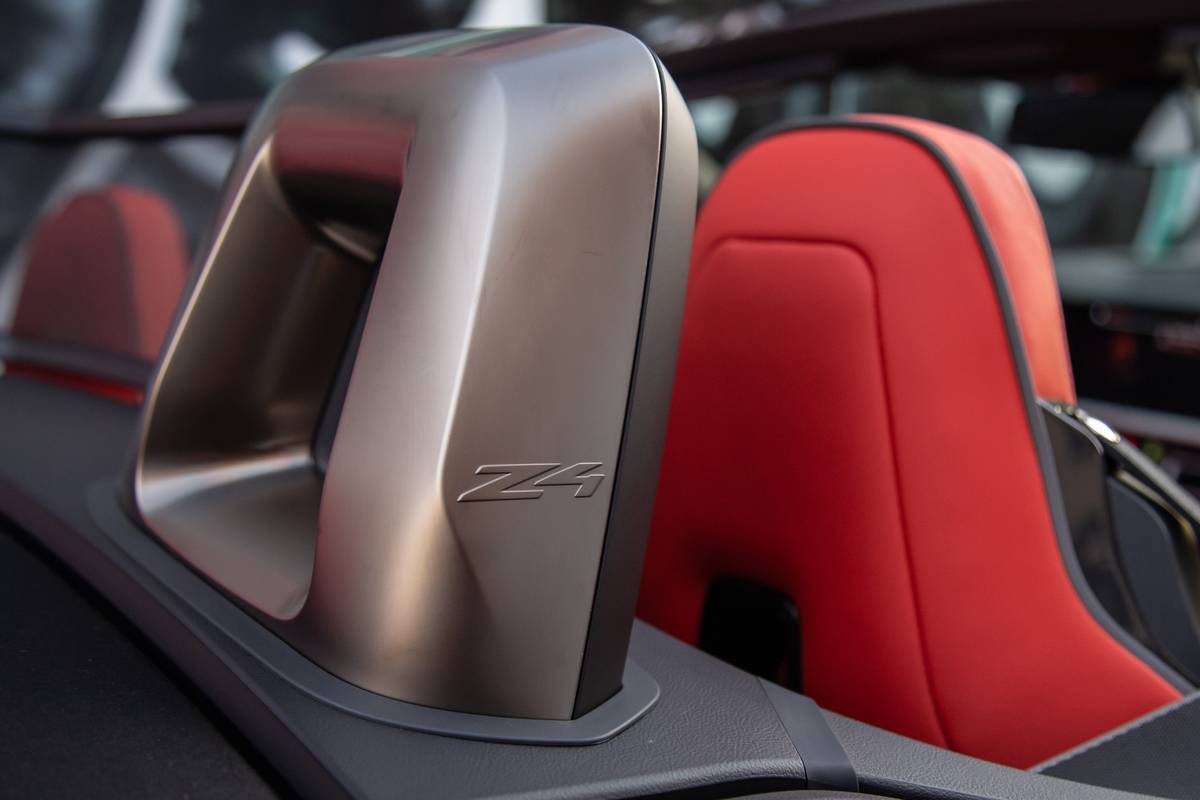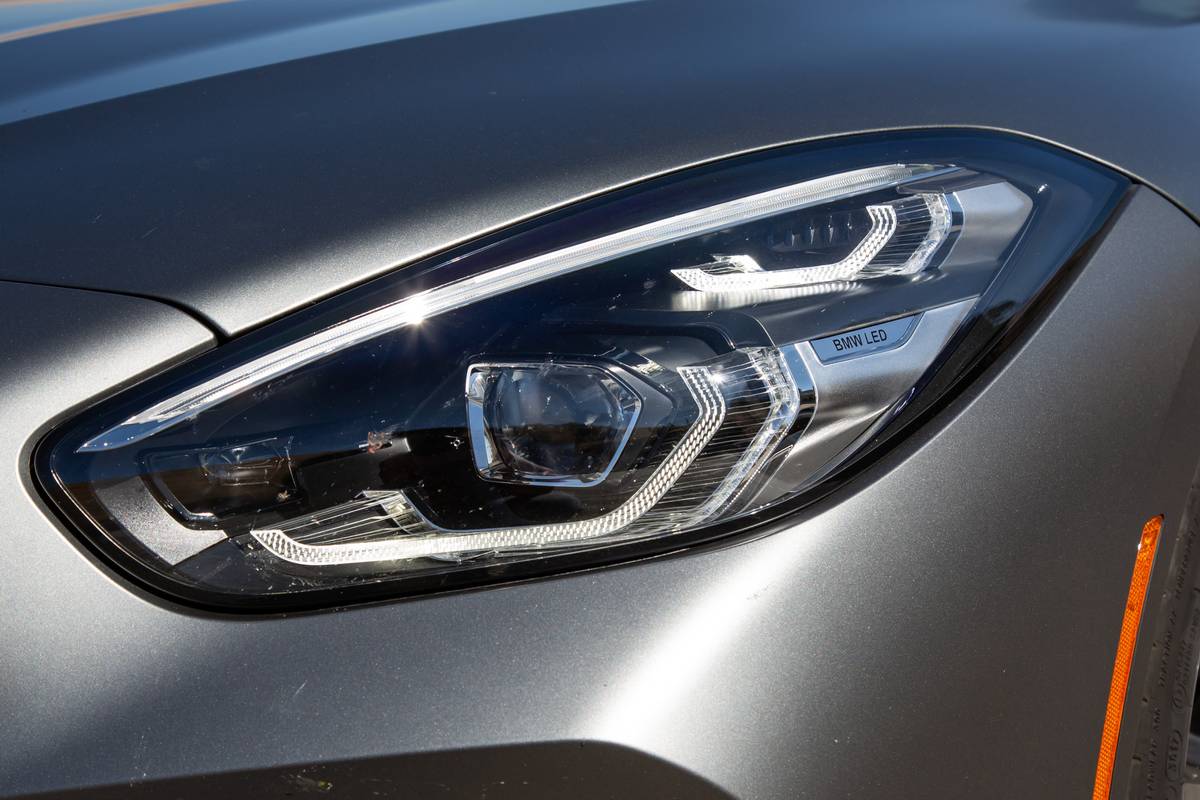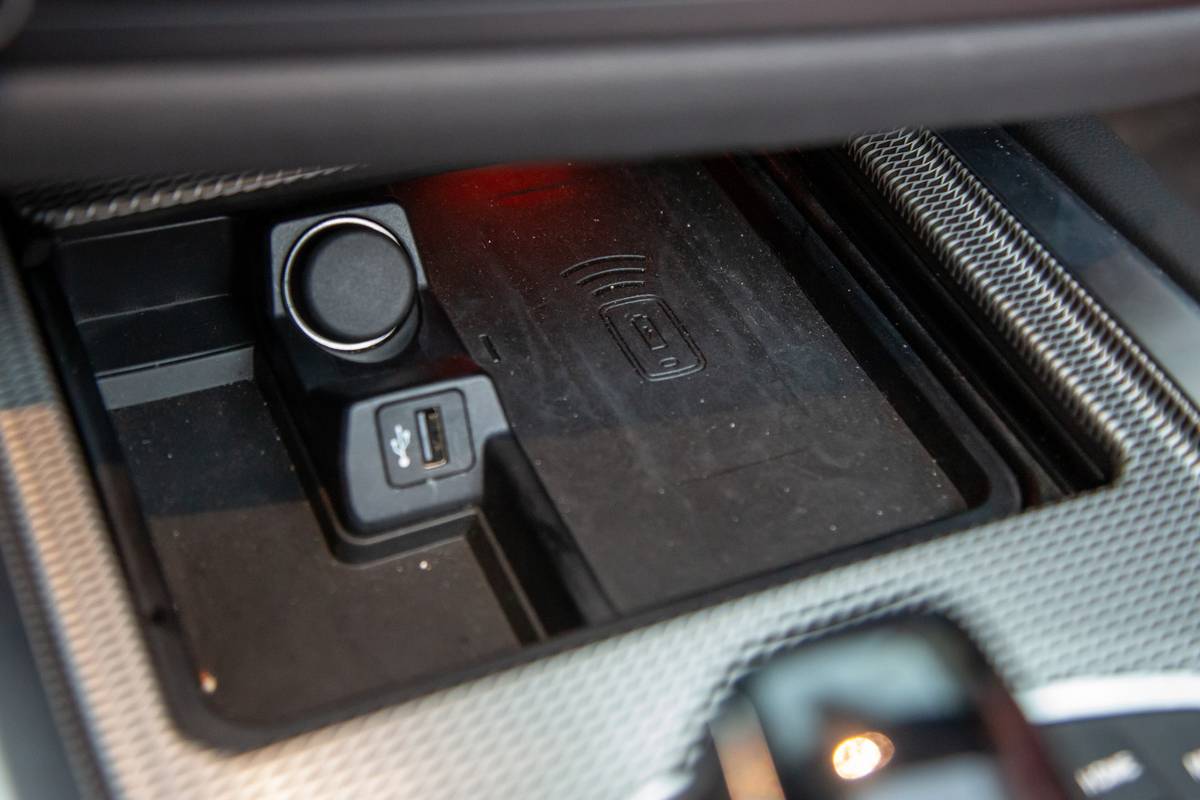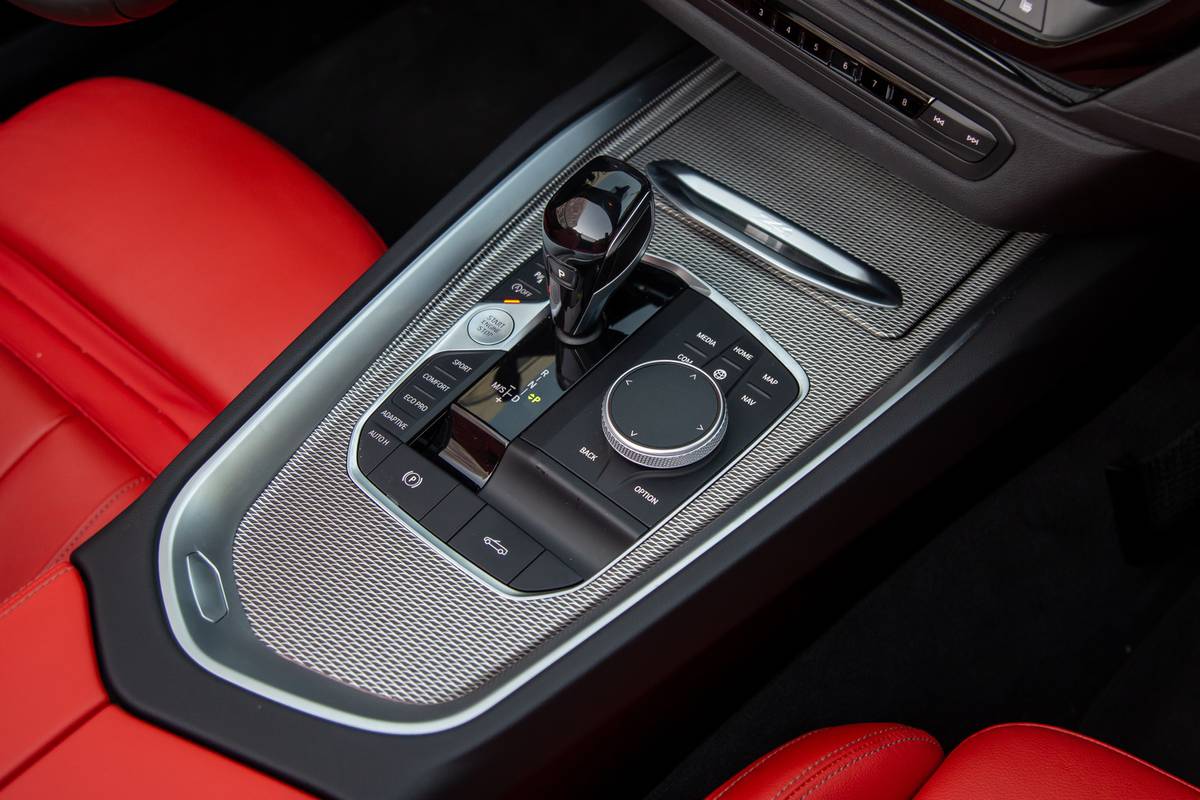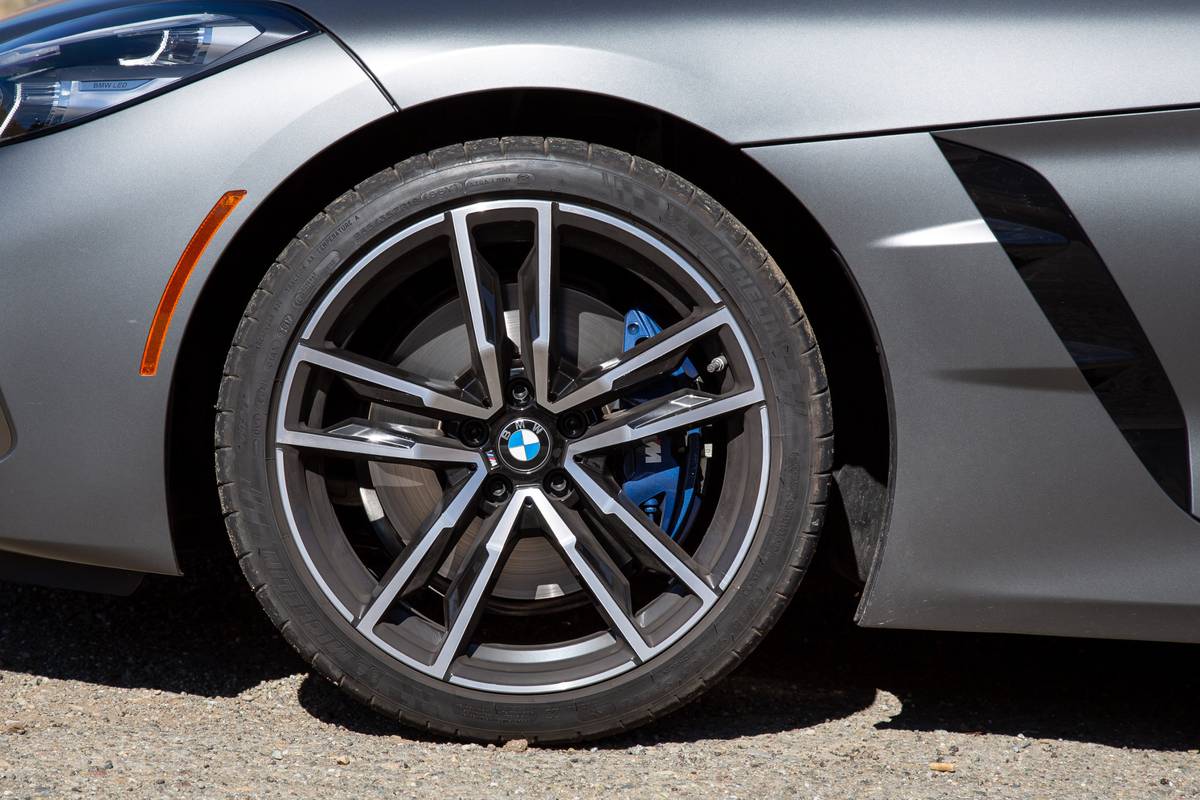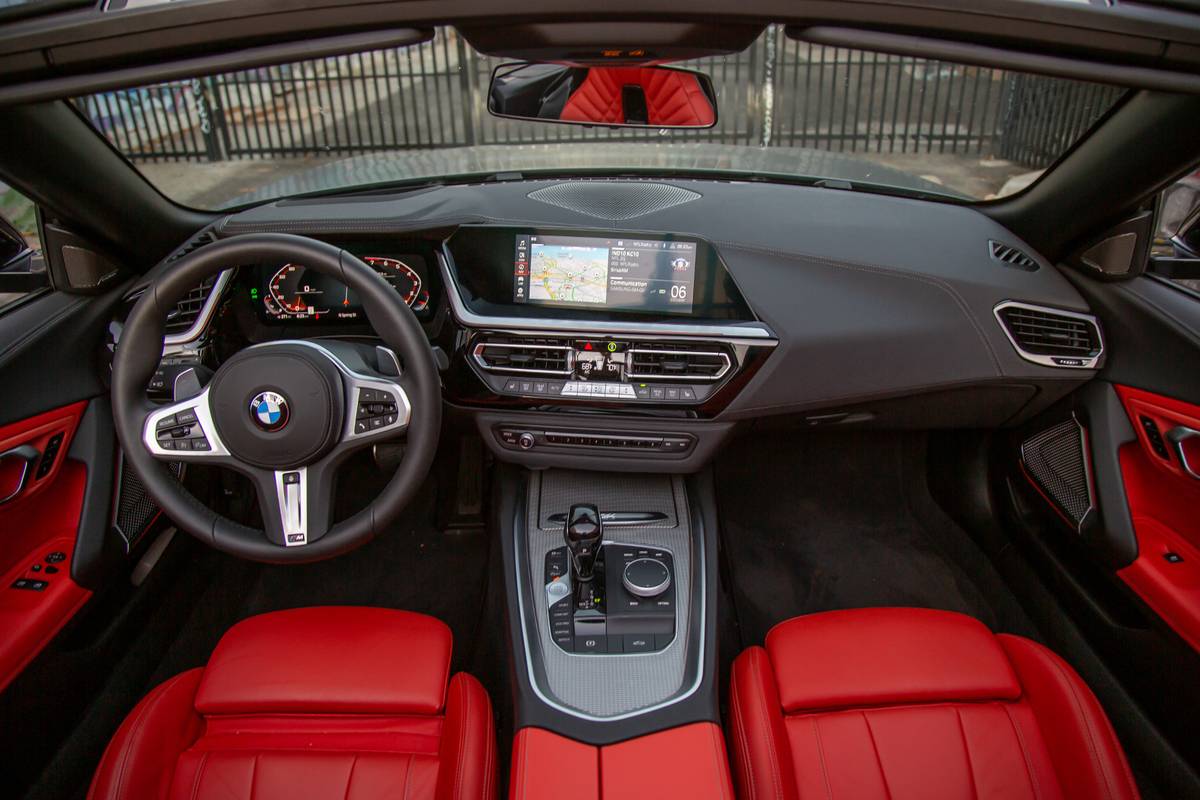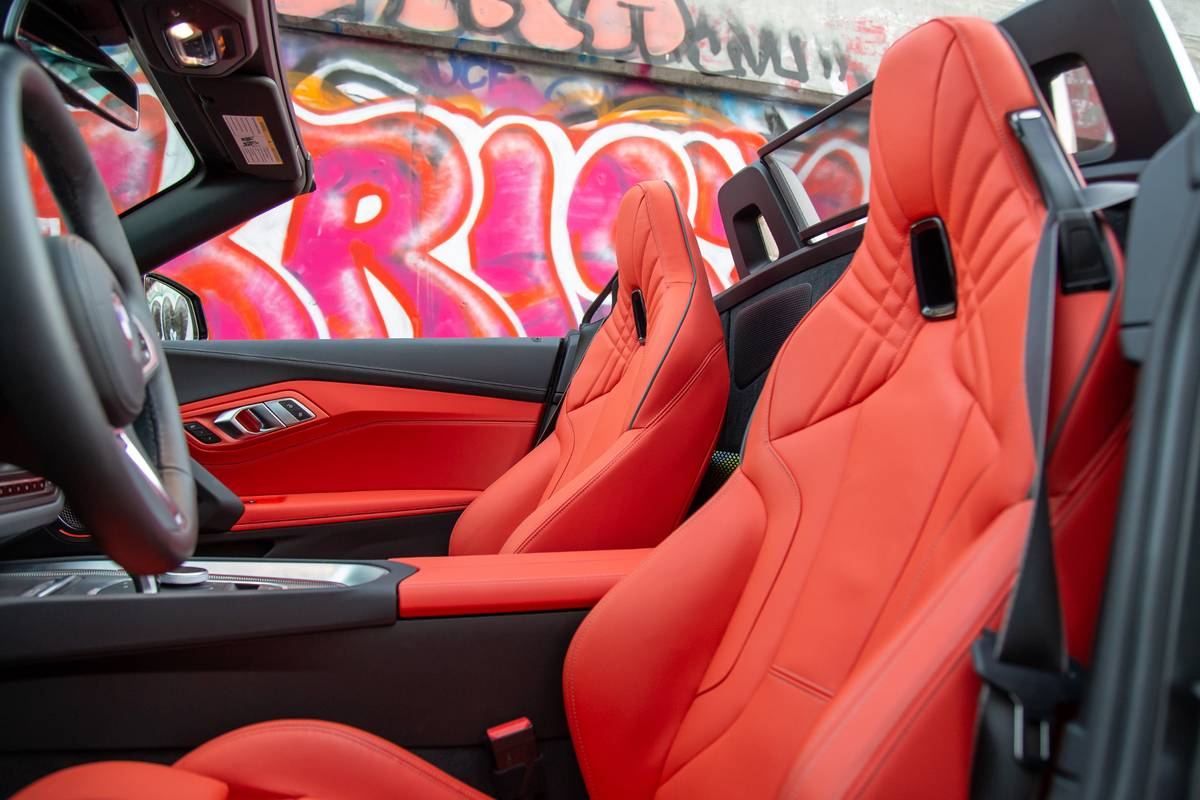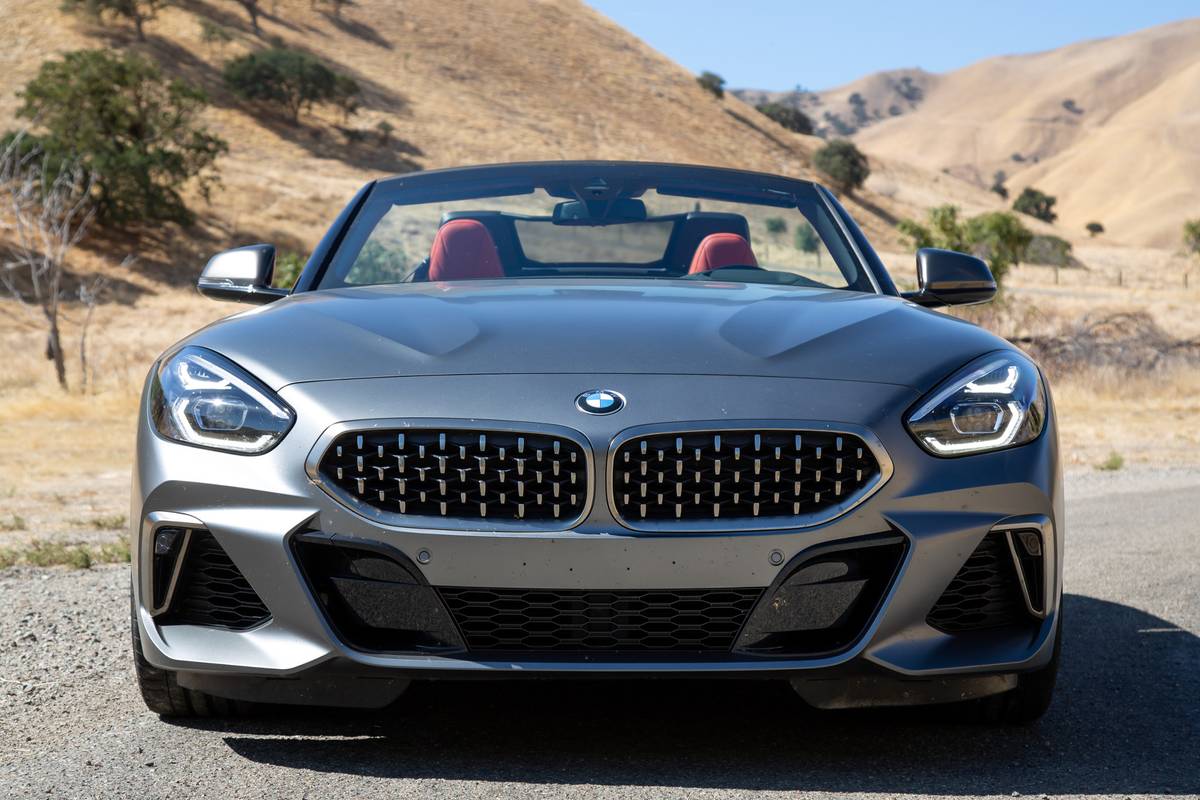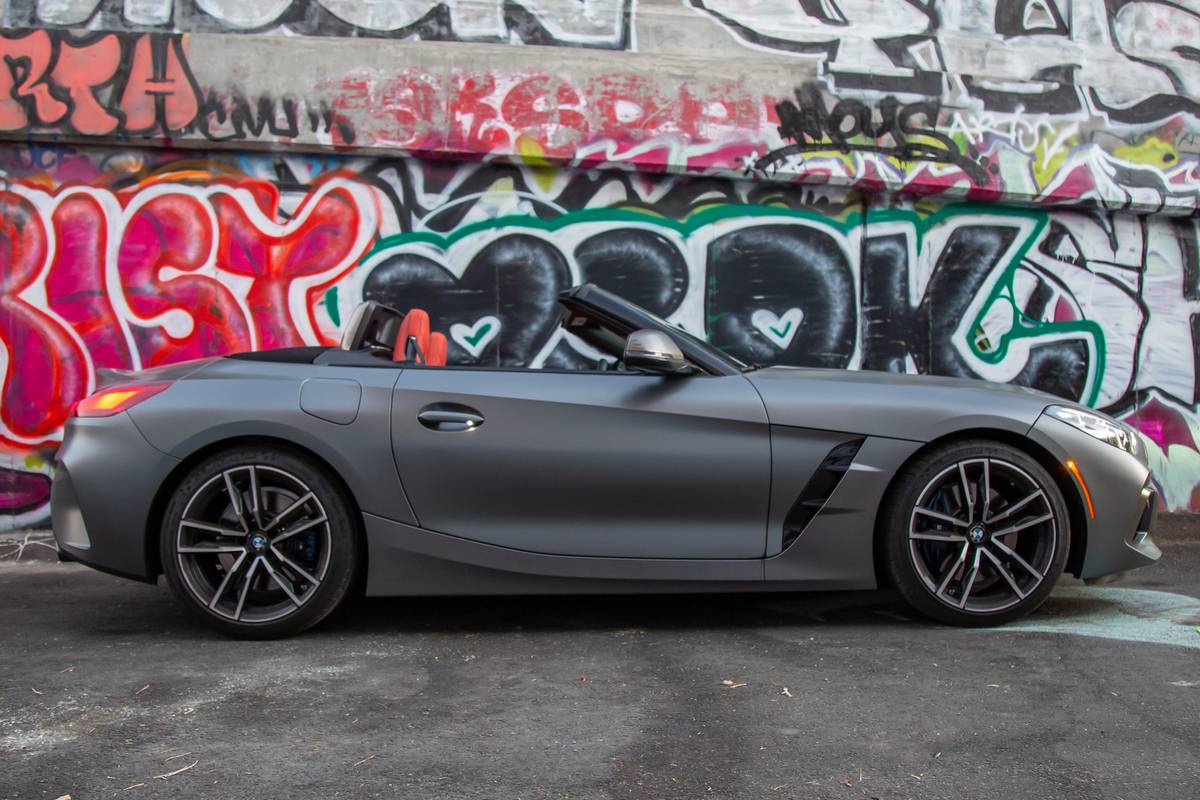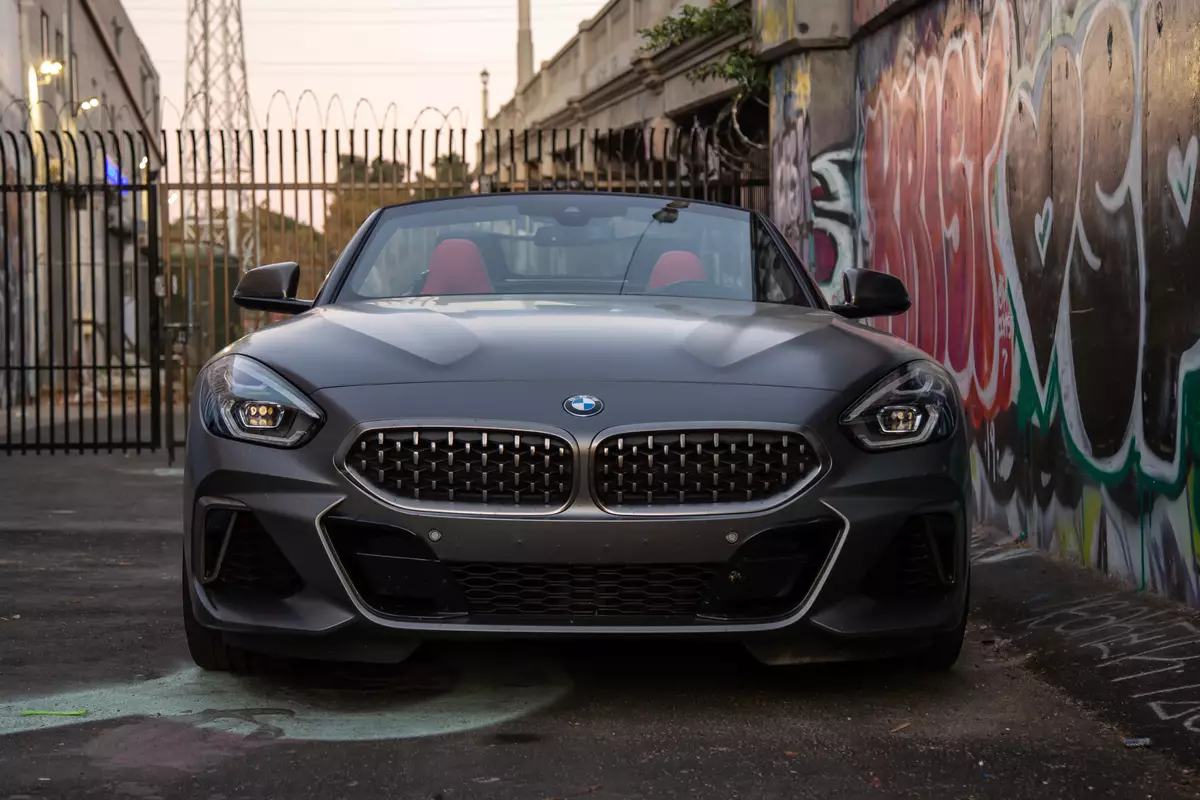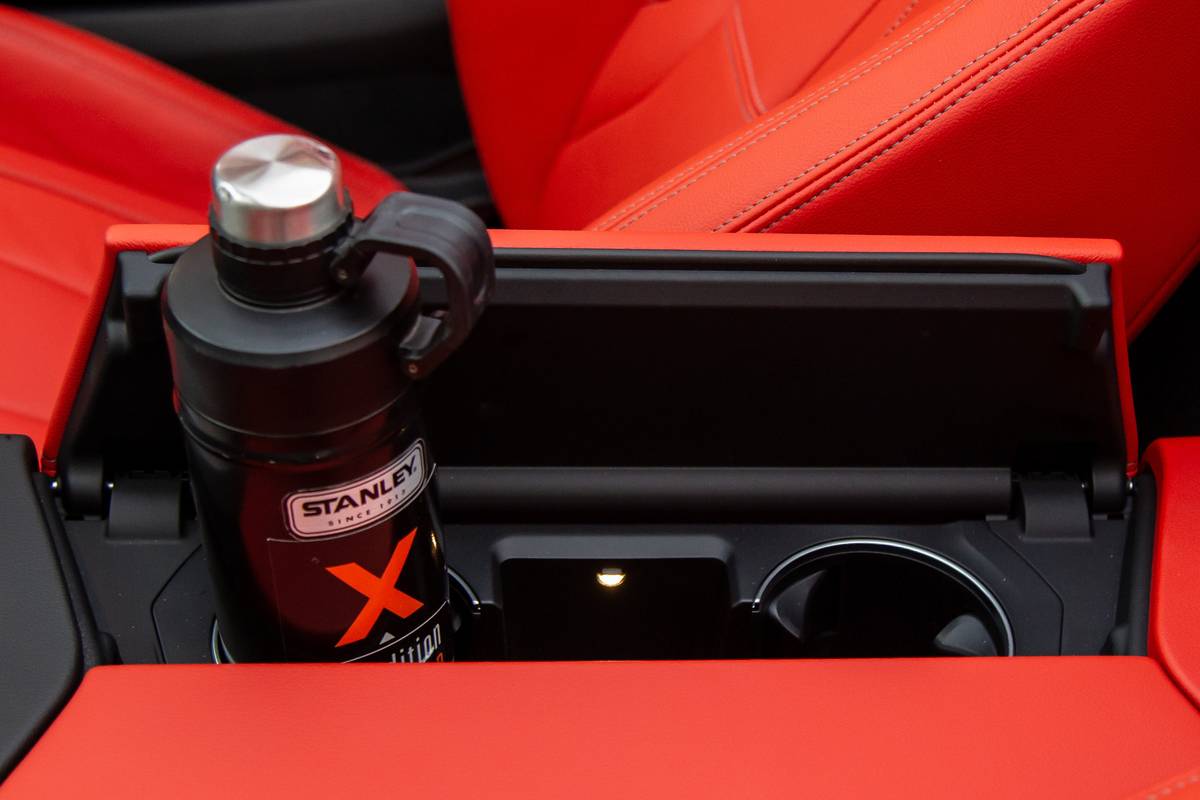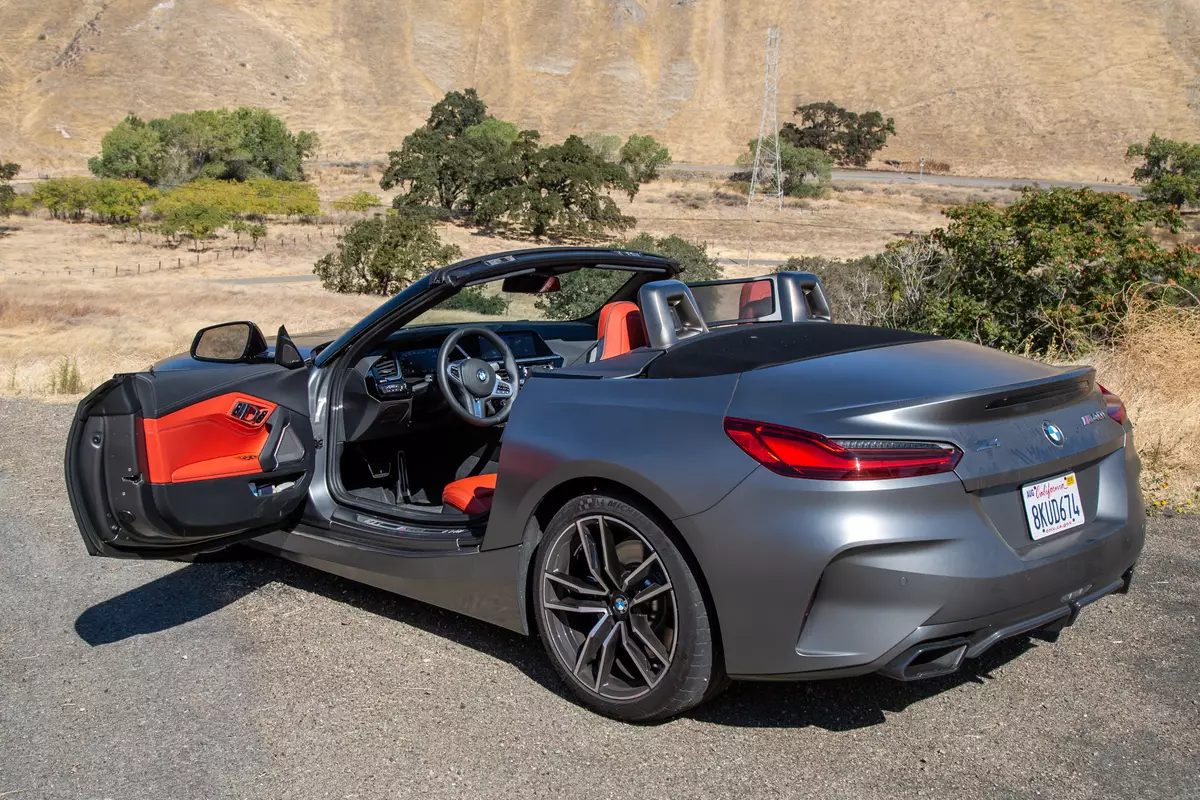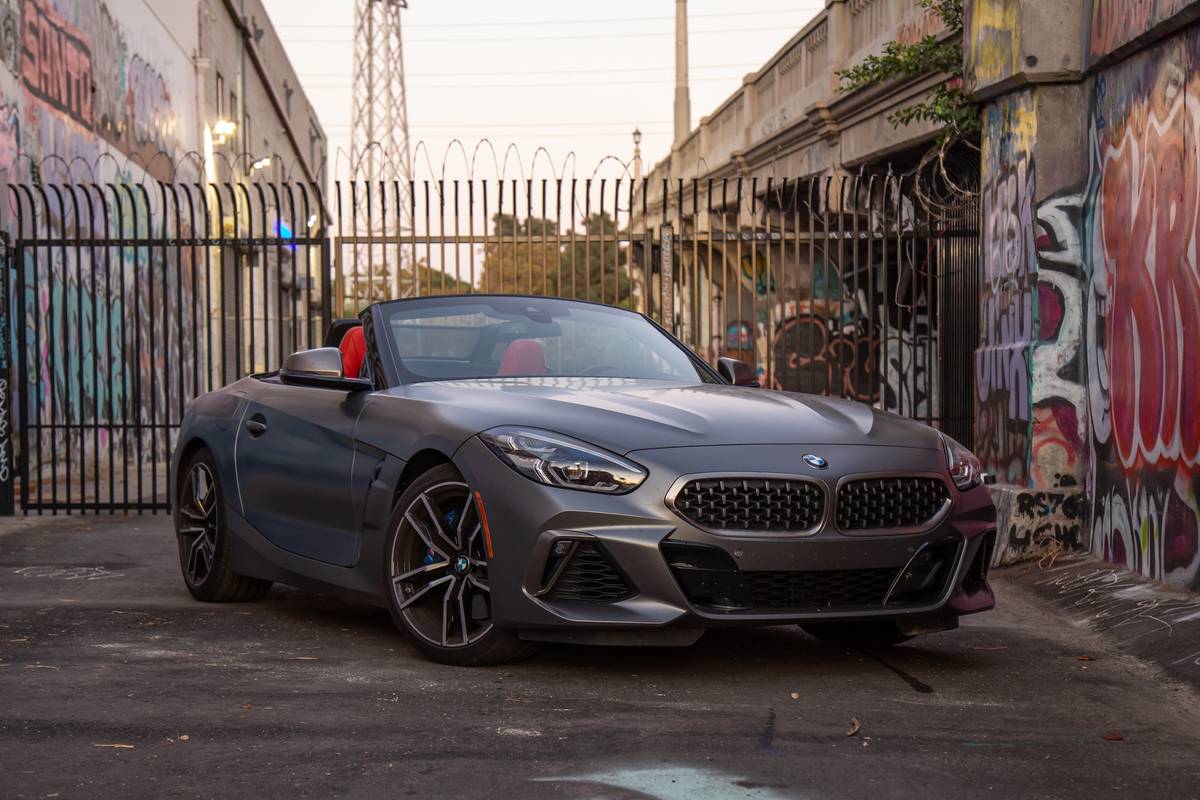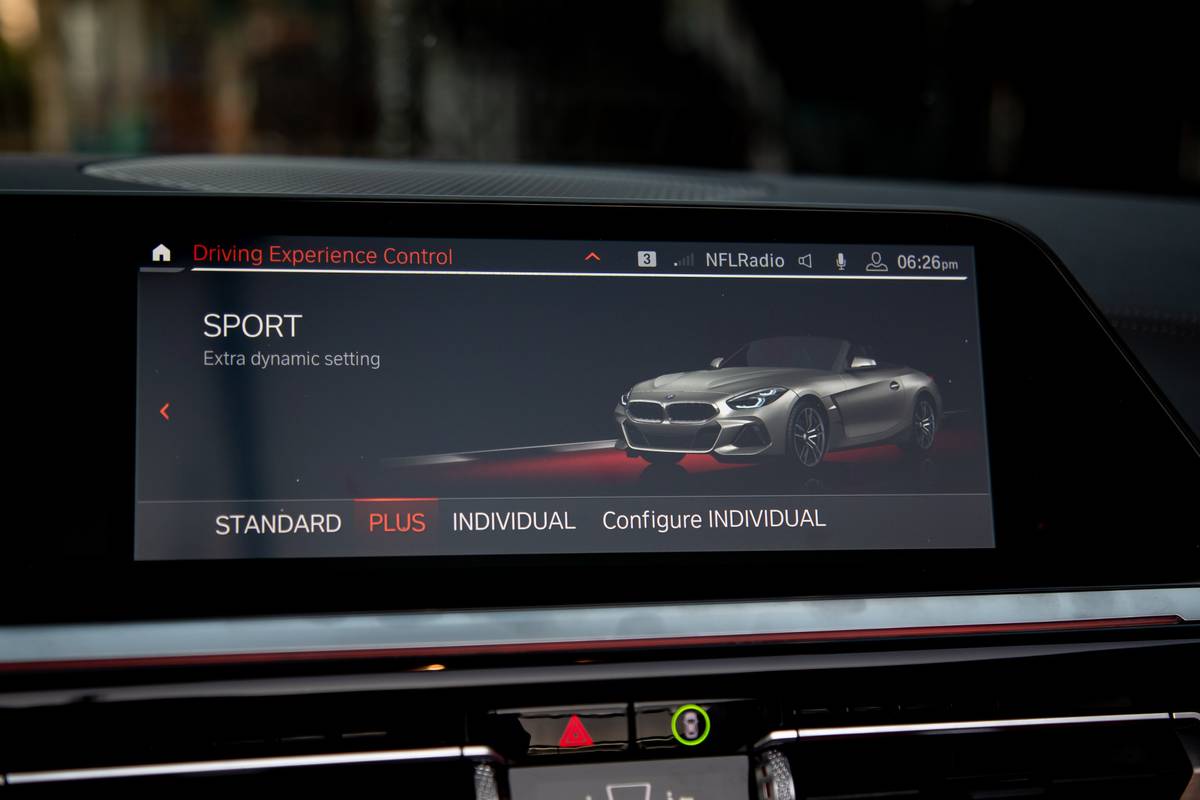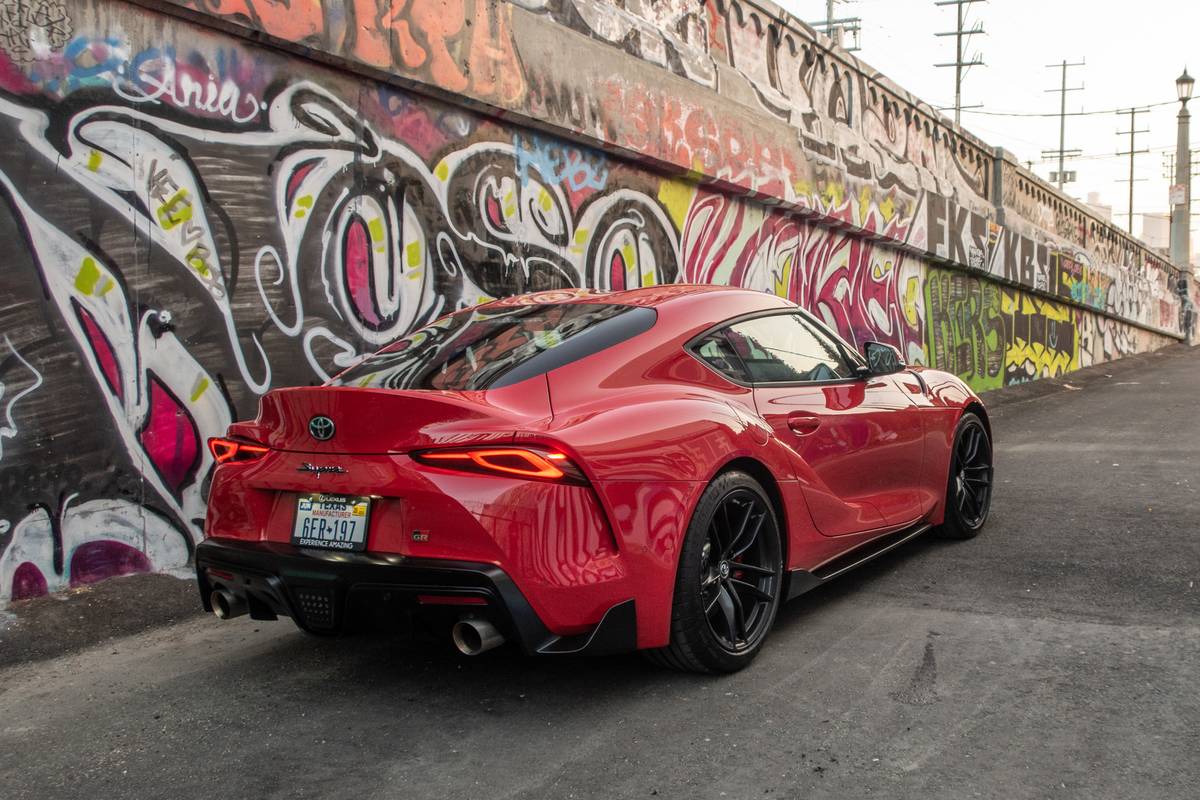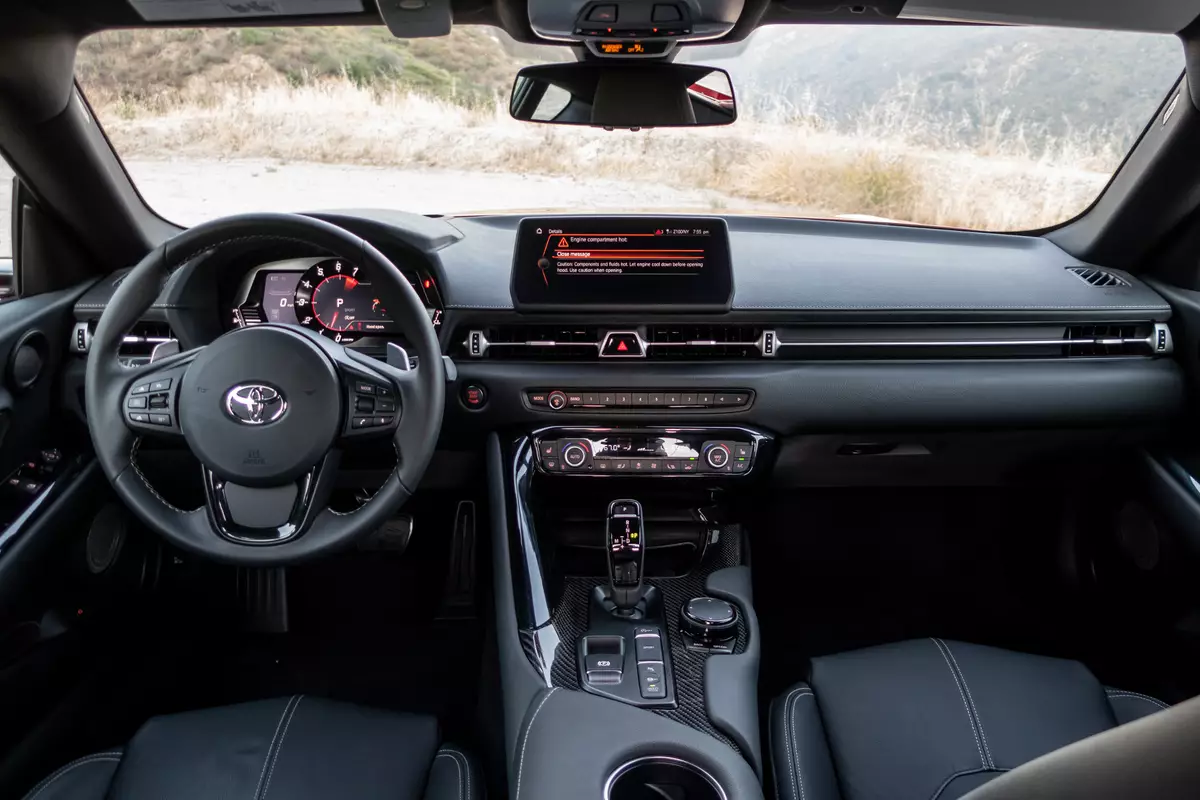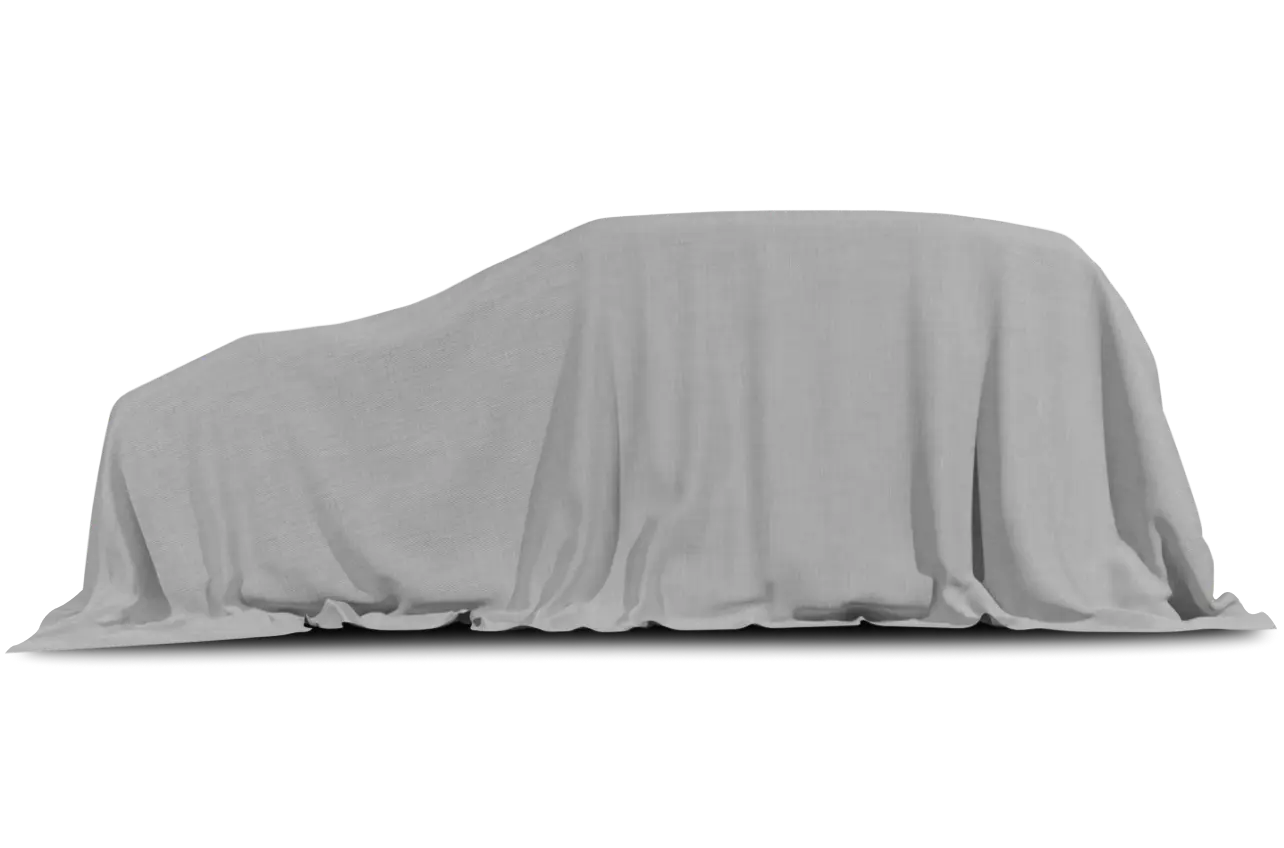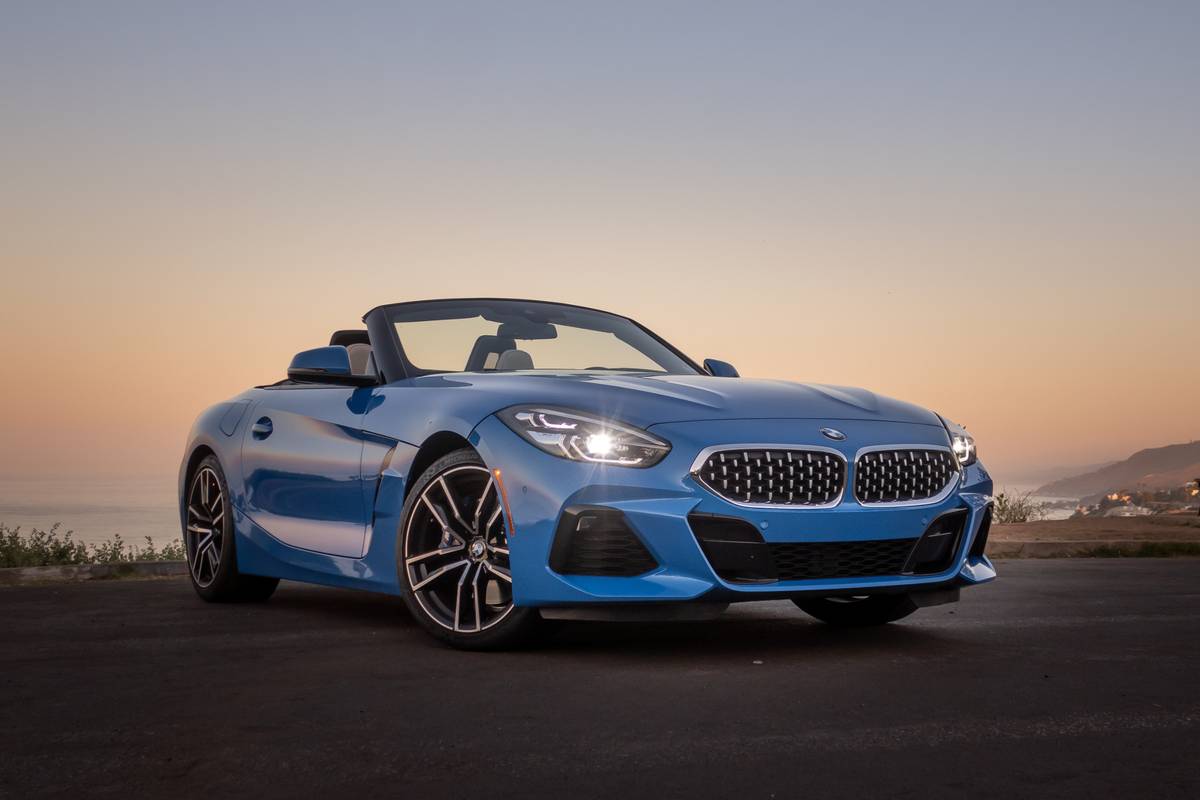
The verdict: Bury the past. The new Z4 ups the fun quotient and delivers performance to match its looks.
Versus the competition: The most direct competitor to the Z4 is the related Toyota Supra; the BMW offers similar performance, but with a more luxurious interior and superior technology — and a price tag to match.
Related: 2019 BMW Z4: Everything You Need to Know
After a two-year hiatus, the BMW Z4 makes an unanticipated, but not unwelcome, return. For a while it looked like the Z4 was dead and buried; the hardtop convertible was last sold as a 2016 model, and its demise didn’t inspire much grief. The old model was fine but didn’t drive well enough to be memorable, and it had some awkward styling.
Fast forward to 2019, when the Z4 reappeared thanks to a collaboration between BMW and Toyota that resulted in a sports car for each company. Toyota reincarnated the Supra and BMW brought back the Z4 roadster — this time with a soft top, perfect weight balance and a promise of greater sportiness.
Second Chances
There are two Z4 trim levels, with the biggest difference under the hood: The sDrive 30i features a turbocharged, 2.0-liter four-cylinder, while the sDrive M40i comes with a turbocharged, 3.0-liter inline-six-cylinder. The sDrive M40i also comes with a few performance upgrades that are optional on the sDrive 30i — and one in particular, the Track Handling Package, makes a big difference.
My first taste of the new Z4 came driving a 2019 Z3 30i around Palm Springs, Calif., for half a day, sans the Track Handling Package. It was a big improvement over the outgoing Z4, but I found it lacking some spark. It was fine for 90 percent of the time, but that last 10 percent — where you really want to push and enjoy a car — is the reason you buy a sports car. That Z4 was a good car to drive on a sunny day, but not one you’d go out of your way to find a road on which to stretch it.
Since then I’ve spent a week apiece with a 2019 30i and a 2020 M40i, both equipped with the Track Handling Package, and my mind has changed. (According to BMW, content and pricing from 2019 to 2020 are unchanged for the Z4 30i.)
Check the Box
The Track Handling Package is $2,450 on the 30i and standard on the M40i. It includes M Sport brakes, an adaptive suspension and an M Sport differential — and, as stated, it makes a difference. The first 30i I tested had just the adaptive suspension, and it got vague as I pushed it harder. The steering and suspension didn’t feel taut enough to offer the kind of feedback I wanted.
With the Track Handling Package, the car feels much sharper — not through any added firmness from the shocks (that I could detect), but from the differential upgrade. That upgrade allows the rear axle to put down power more crisply on corner exits as it shuffles torque to the right places, and it gives the car a more playful nature that’s very welcome.
I still want a hair more feedback from the steering wheel, which gets a touch light at the limit, but the ability to throttle through turns with more confidence helps make up for it. The larger brakes are also welcome; the car slows down with the same immediacy with which it accelerates.
These upgrades are standard on M40i models, and the car exhibits much the same behavior as the 30i — just with a lot more power.
POWERtrains
Both the 30i and 40i shine in this department. Their engines are mated to an eight-speed automatic transmission and rear-wheel drive, but there’s a big difference in power output. The 30i’s four-cylinder makes 255 horsepower and 295 pounds-feet of torque — an especially eye-catching figure. This is a familiar powertrain, and it’s good in … well, pretty much every BMW vehicle, but it’s especially good here. The engine’s wide powerband and the responsiveness of the transmission when called upon with haste are real highlights of the 30i.
The M40i, however, is on a different level, simply because of its power difference: 382 hp and 369 pounds-feet of torque. It changes the nature of the car from something light and agile into something more sinister, with a popping soundtrack to match. Any throttle liftoff with the settings dialed up to Sport or Sport Plus is met with a delightful crackle from the exhaust. With the top down for full effect, it’s addicting.
BMW says the M40i will go from 0-60 mph in just 3.9 seconds, but it feels quicker from the seat. It bursts off the line and charges forward, snapping off shifts and leaving a cloud of dust and noise behind it. This powertrain is familiar, as well; we recently tested it in the BMW M340i, which charged from 0-60 mph in 3.89 seconds. That number will be lower in the lighter Z4, and I wholeheartedly agree with the widespread assessment that BMW has underrated this engine’s power. (Same thing goes for the Supra.)
Though there’s a big difference in performance, there isn’t in fuel economy: EPA ratings are 24/32/27 mpg city/highway/combined for the 30i, 24/31/26 mpg for the M40i.
Cozy Interior
The Z4 is a two-seat roadster, so space will never be superfluous. I did appreciate, though, that even though the cockpit is small, there’s a decent amount of seat travel; I had no trouble finding an ideal driving position. That’s less common than you’d think in low-slung sports cars like this. I’m a fan of bright interiors, so the Vernasca Magma Red leather upholstery in the M40i felt tailor-made for my tastes — it comes as a part of the Executive Package, otherwise it costs $1,700 by itself.
A pair of 10.25-inch screens come standard, one serving as the instrument panel and the other as a central touchscreen that can also be controlled via a rotary controller on the console between the seats. The screen in front of the driver has mostly fixed information and limited customization options, and I’m not sure it adds much — unlike Audi’s great Virtual Cockpit system. The other screen, however, is more promising; it’s canted toward the driver to make it easier to see and reach, and BMW’s multimedia systems have come a long way in both usability and functionality. There are a lot of menus to get through, so it does come with a bit of a learning curve, but I was very comfortable with it by the end of a week (let alone two).
Wireless Apple CarPlay comes standard, and though BMW once planned to charge owners a yearly subscription fee to use CarPlay after the first year, the company has since walked that back. Owners of 2019 and 2020 BMWs will now get it free; the change will happen seamlessly — whether owners signed up for a subscription beyond the first year or not. Android Auto users, however, are still out of luck, as that isn’t offered on any BMW products (including Mini).
Pricing and Value
The Z4 doesn’t offer much value. It doesn’t have much in the way of standard safety equipment, other than forward automatic emergency braking with pedestrian detection. Adaptive cruise control, lane change assist and a Back-Up Assistant are available.
The 30i starts at $50,695, while the M40i starts at $64,695 (prices include destination charges). The M40i includes the contents of both the Track Handling and M Sport packages standard, in addition to the larger engine. With options, my test vehicles both stickered much higher: $63,545 for the 30i and $73,295 for the M40i.
The new roadster is a triumphant return for the Z4; it looks and drives better — two things you really need from a roadster. Though I didn’t miss it much while it was gone, I’m glad it’s back.
What About the Toyota?
A common question I get is how the Z4 compares to the Toyota Supra, which I also had the privilege of reviewing (tough life, I know). There are a lot of similarities, which is to be expected; the M40i and Supra have the same platform, the same engine and the same transmission. Though each company handled tuning elements by themselves, there’s a lot of overlap, and in this case that’s a positive: That engine is fantastic, and both cars feel underrated in terms of power and how quickly they accelerate.
There is some daylight between the two when it comes to handling. Adding a roof to the car makes the Supra stiffer, and it’s a bit more playful as a result. It’s easier to hang the tail out, and the steering is more dialed in. The Z4 is no slouch in this department, though; it’s just a hair behind the Toyota.
The Z4 makes up ground inside: better screens, better materials and better ergonomics. The Supra’s roof dips very low up front — so low that taller drivers won’t be able to see well out the front of the car (let alone the back). A BMW system powers the Supra’s multimedia, as well, but content has been pulled out of it; there are menu items that don’t lead anywhere.
I’d give the Supra a slight edge in terms of performance, but the Z4 a gigantic edge in terms of amenities and creature comforts — though it’s an edge you’ll pay for: The Supra starts at $50,945, nearly $14,000 less than the M40i.
Cars.com’s Editorial department is your source for automotive news and reviews. In line with Cars.com’s long-standing ethics policy, editors and reviewers don’t accept gifts or free trips from automakers. The Editorial department is independent of Cars.com’s advertising, sales and sponsored content departments.

































